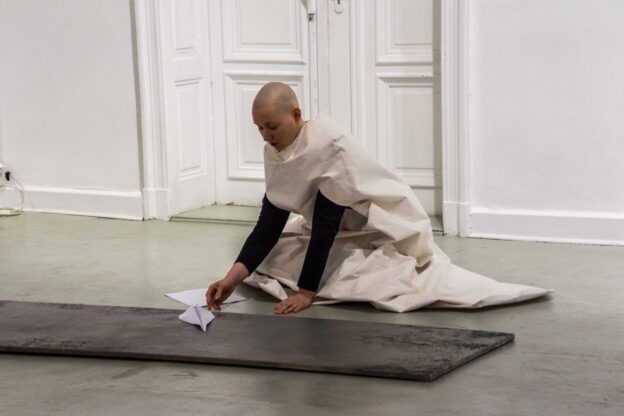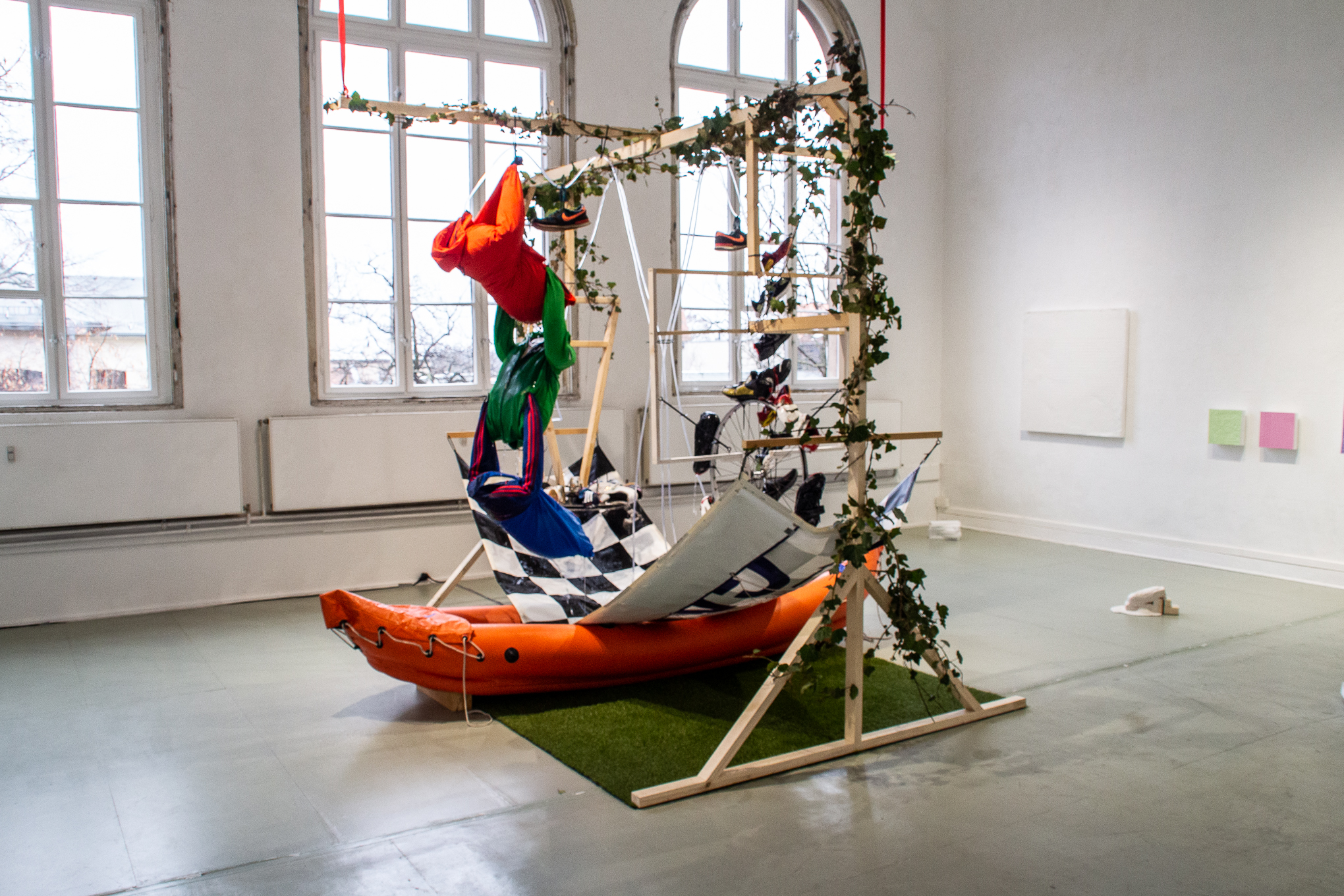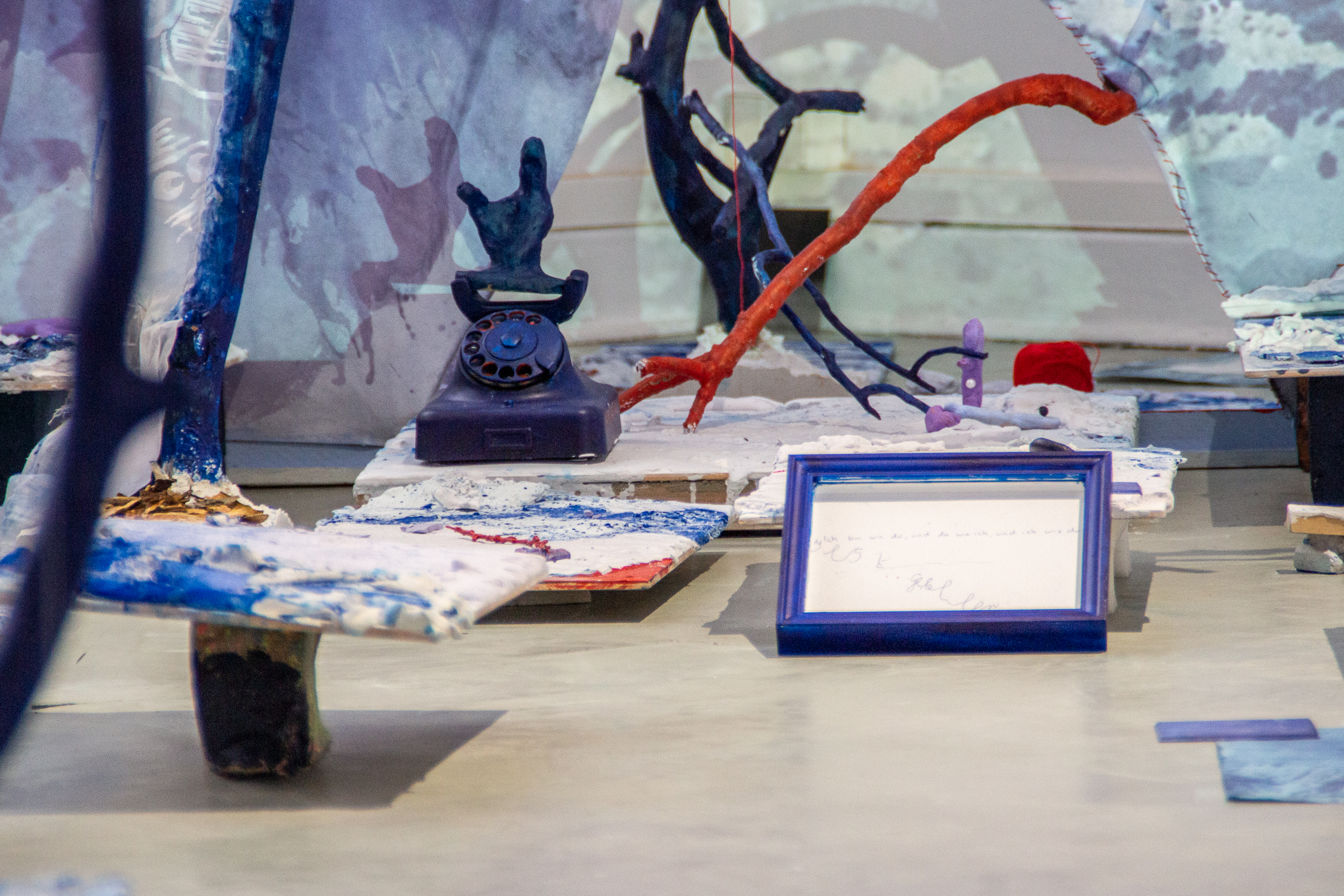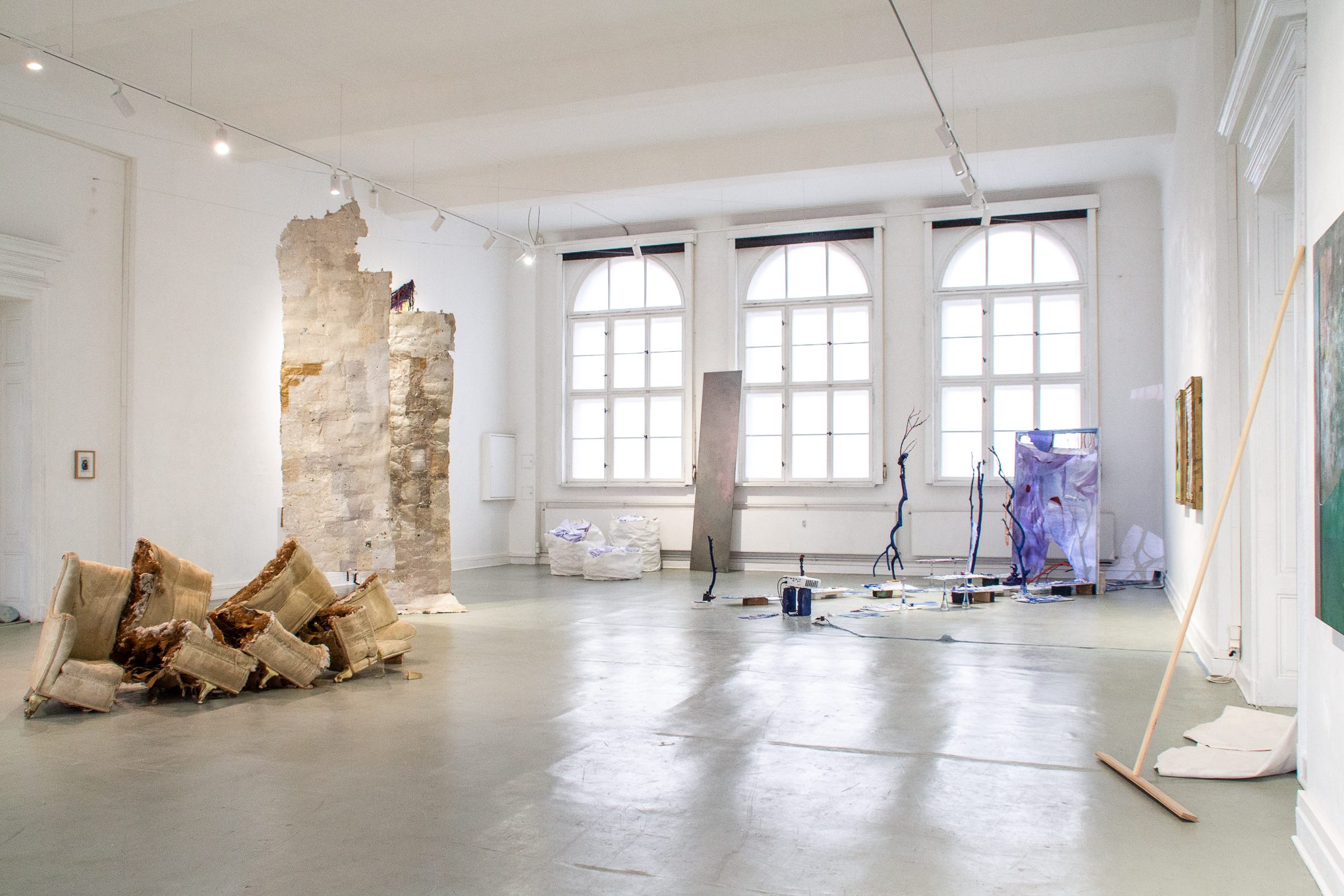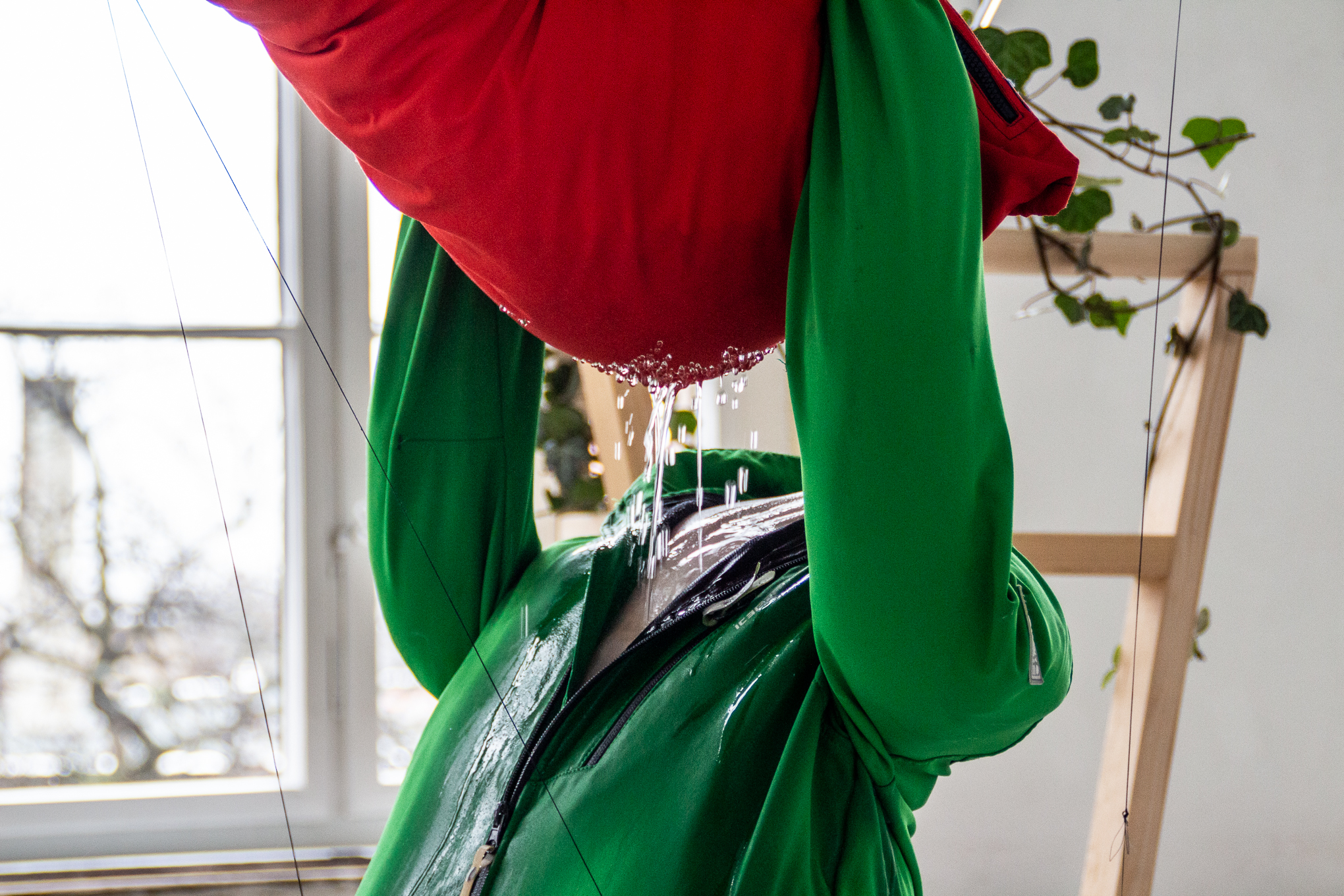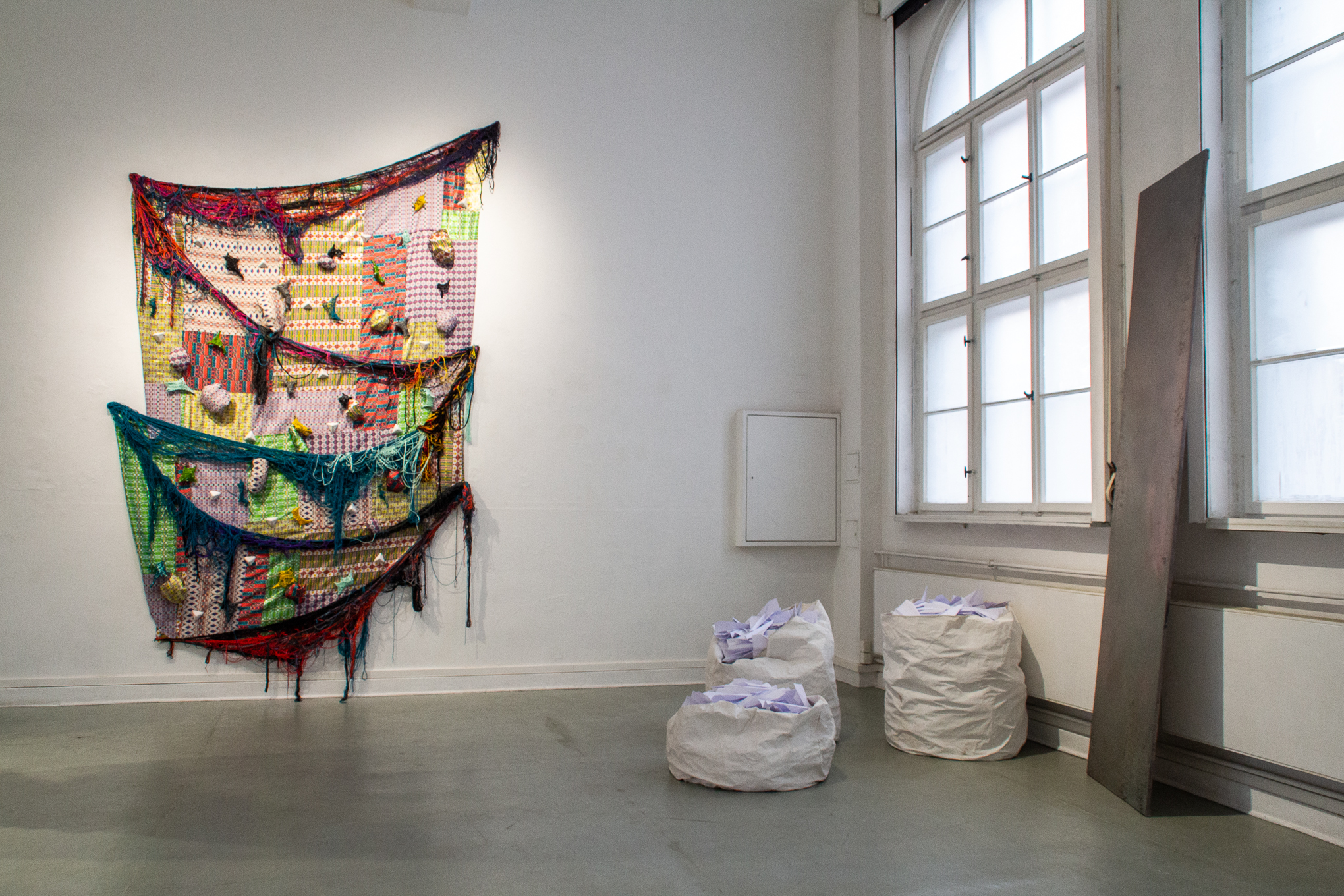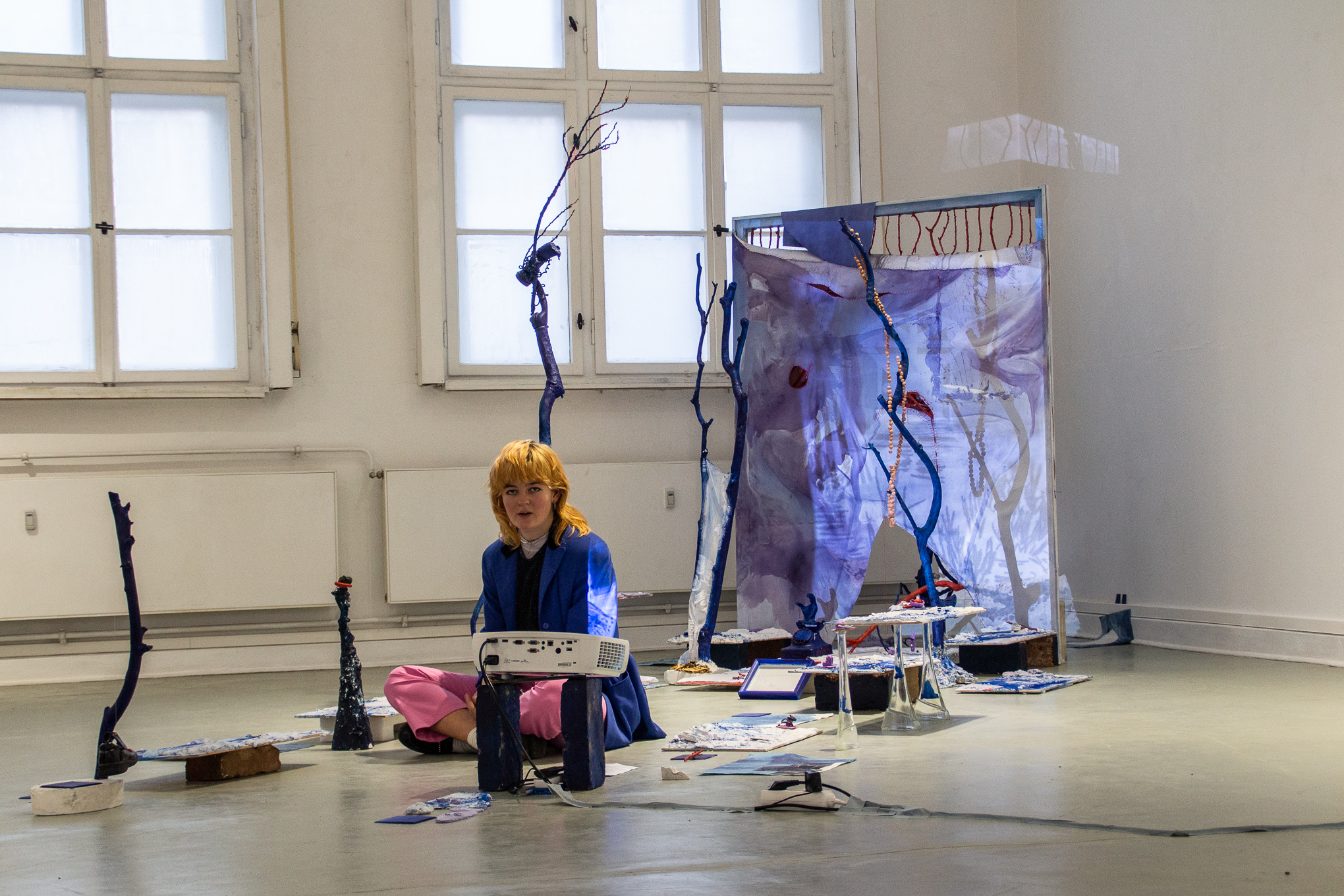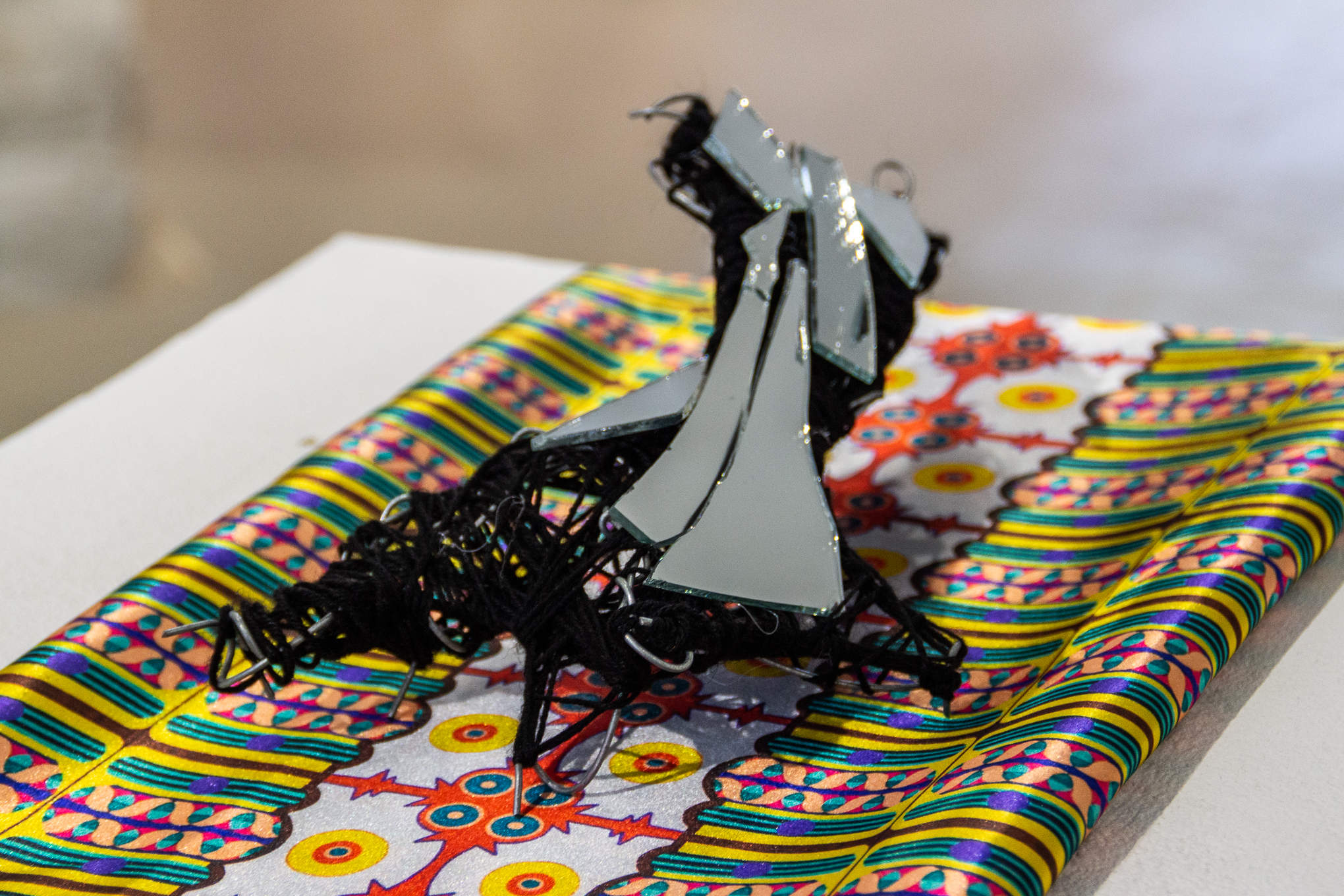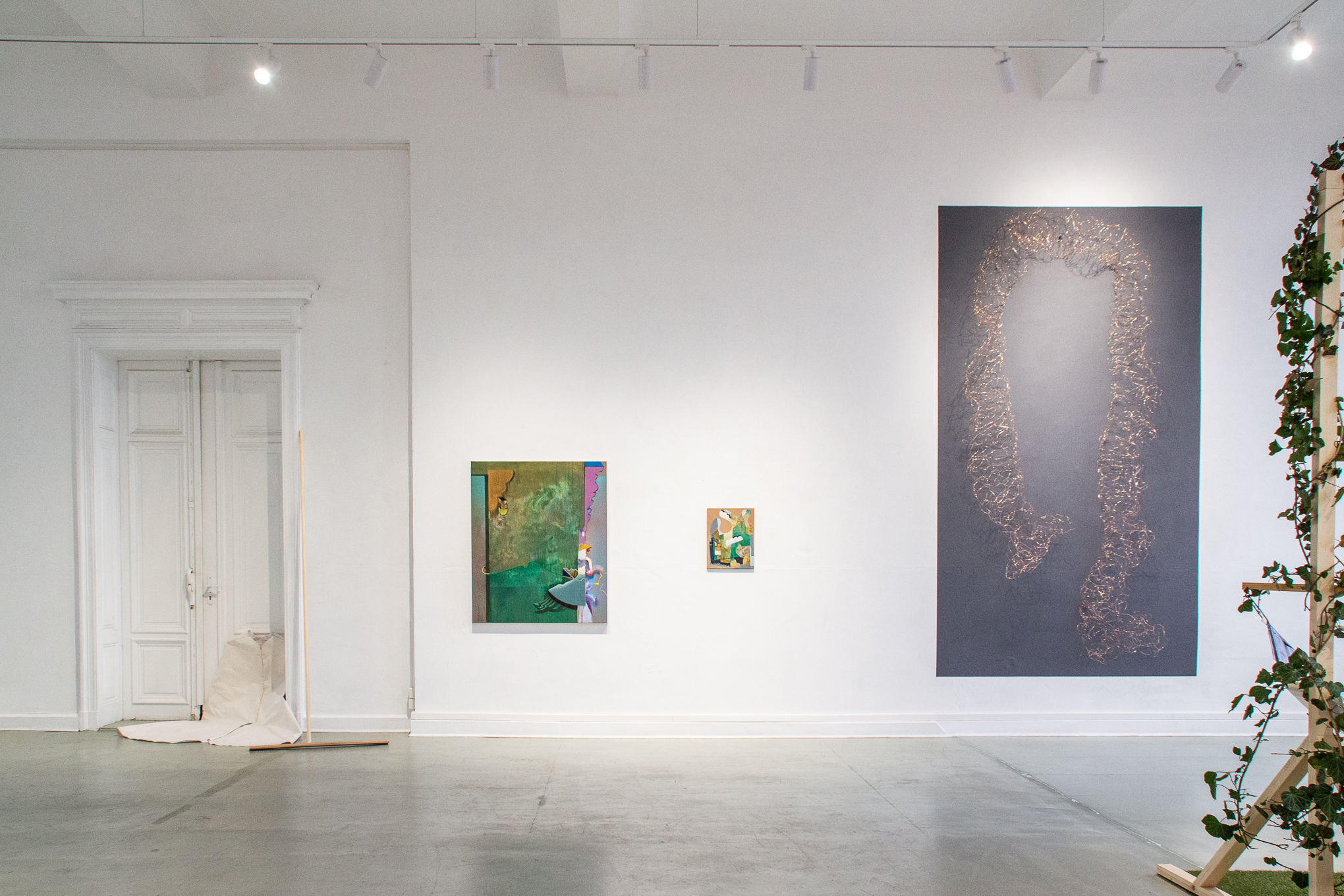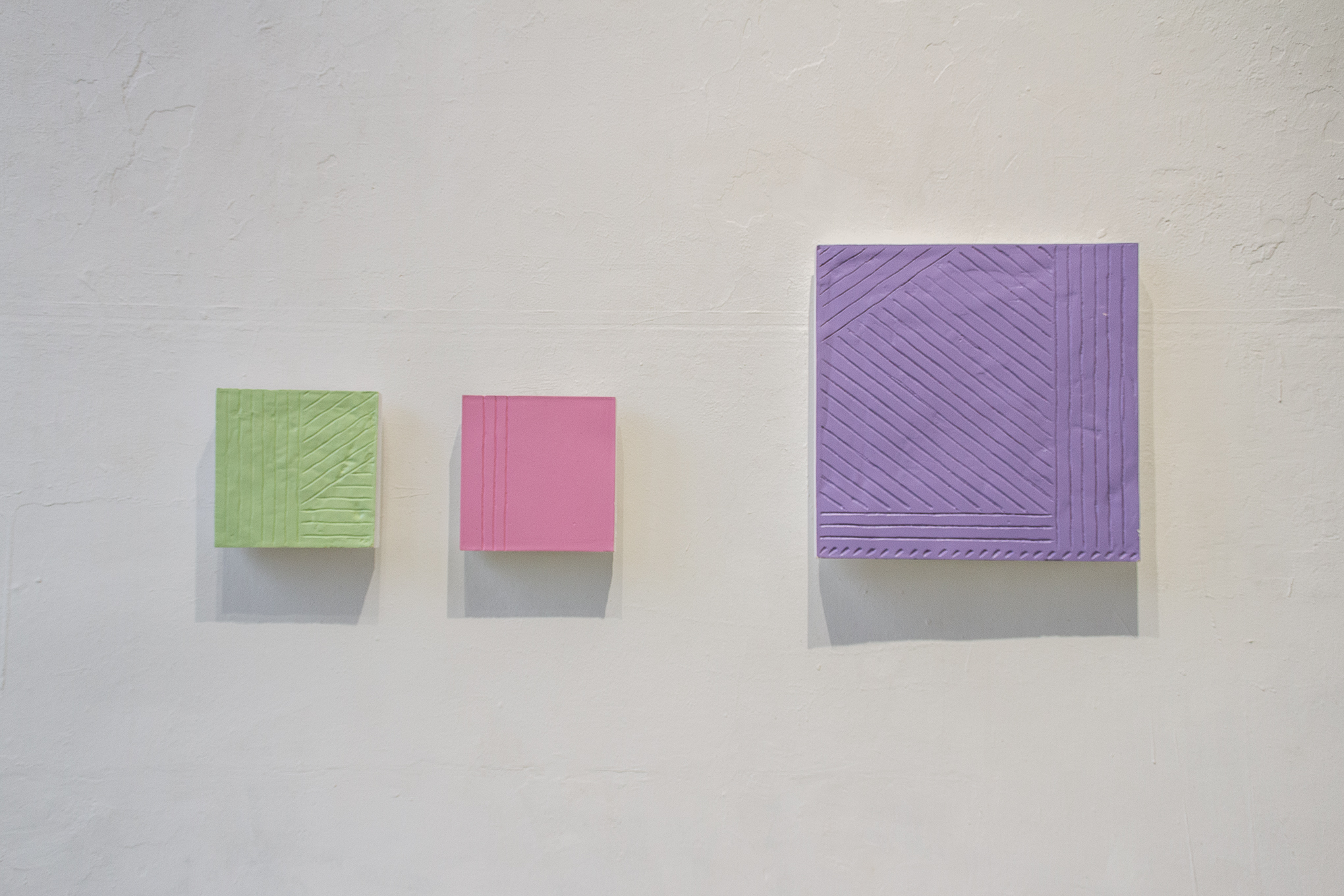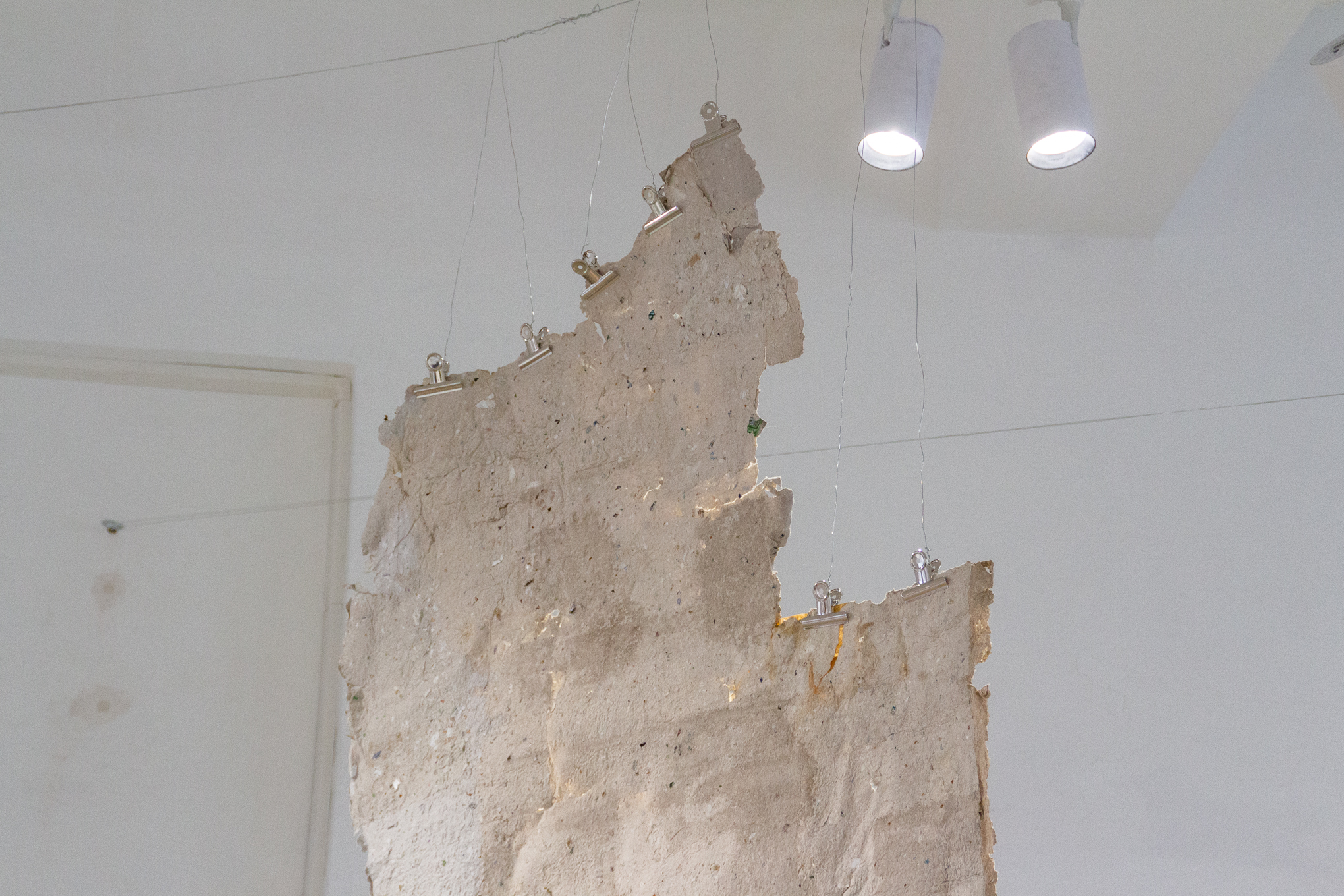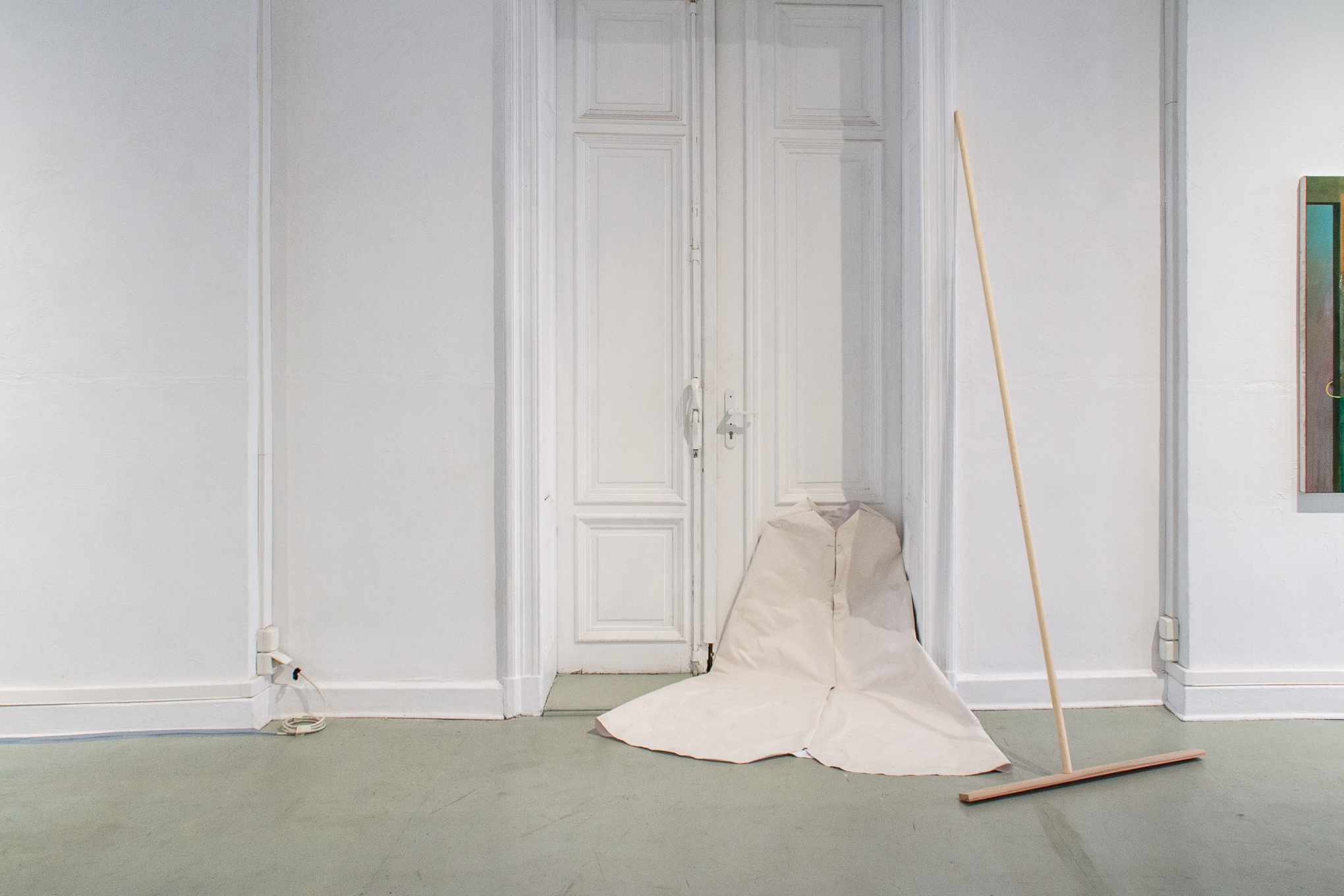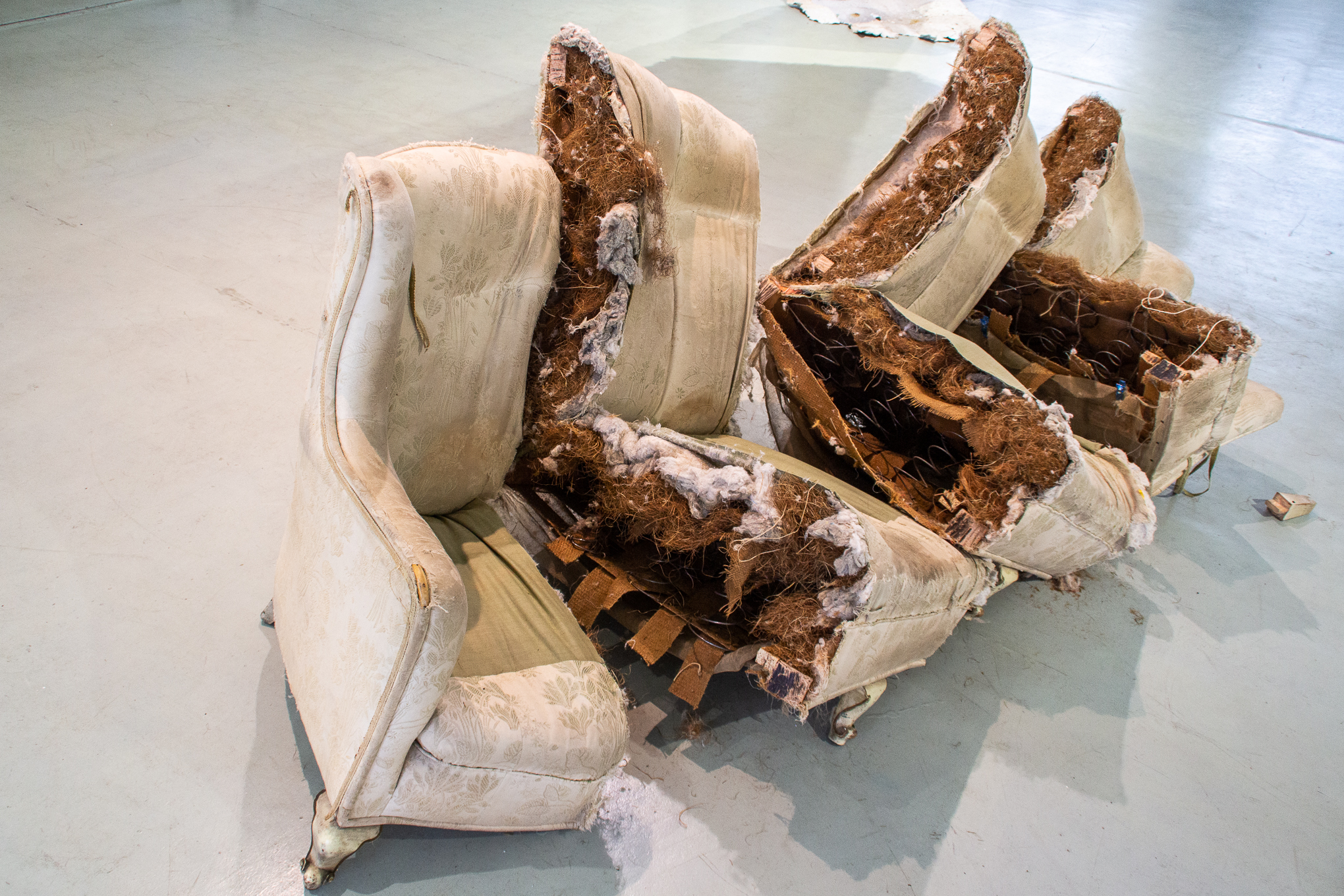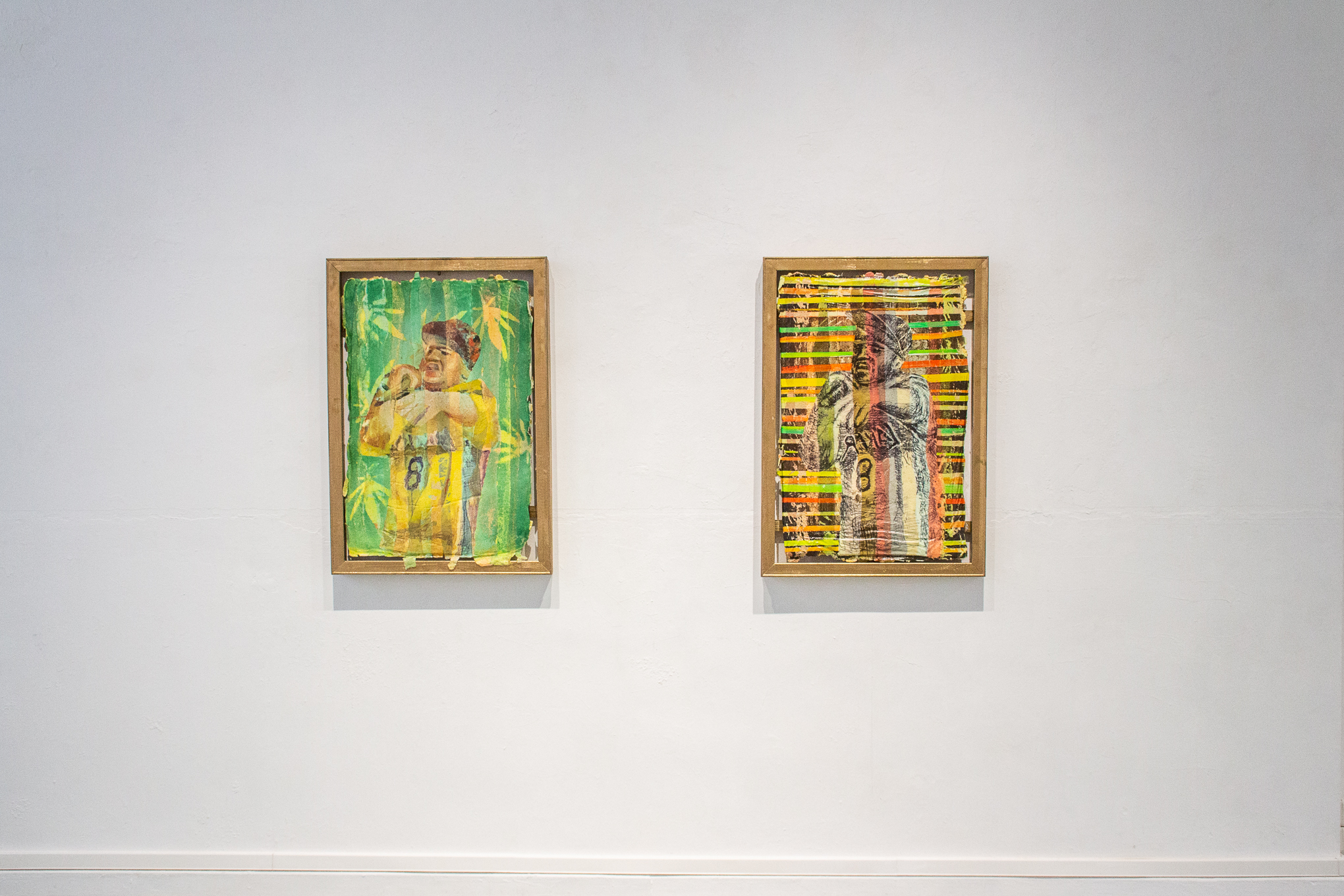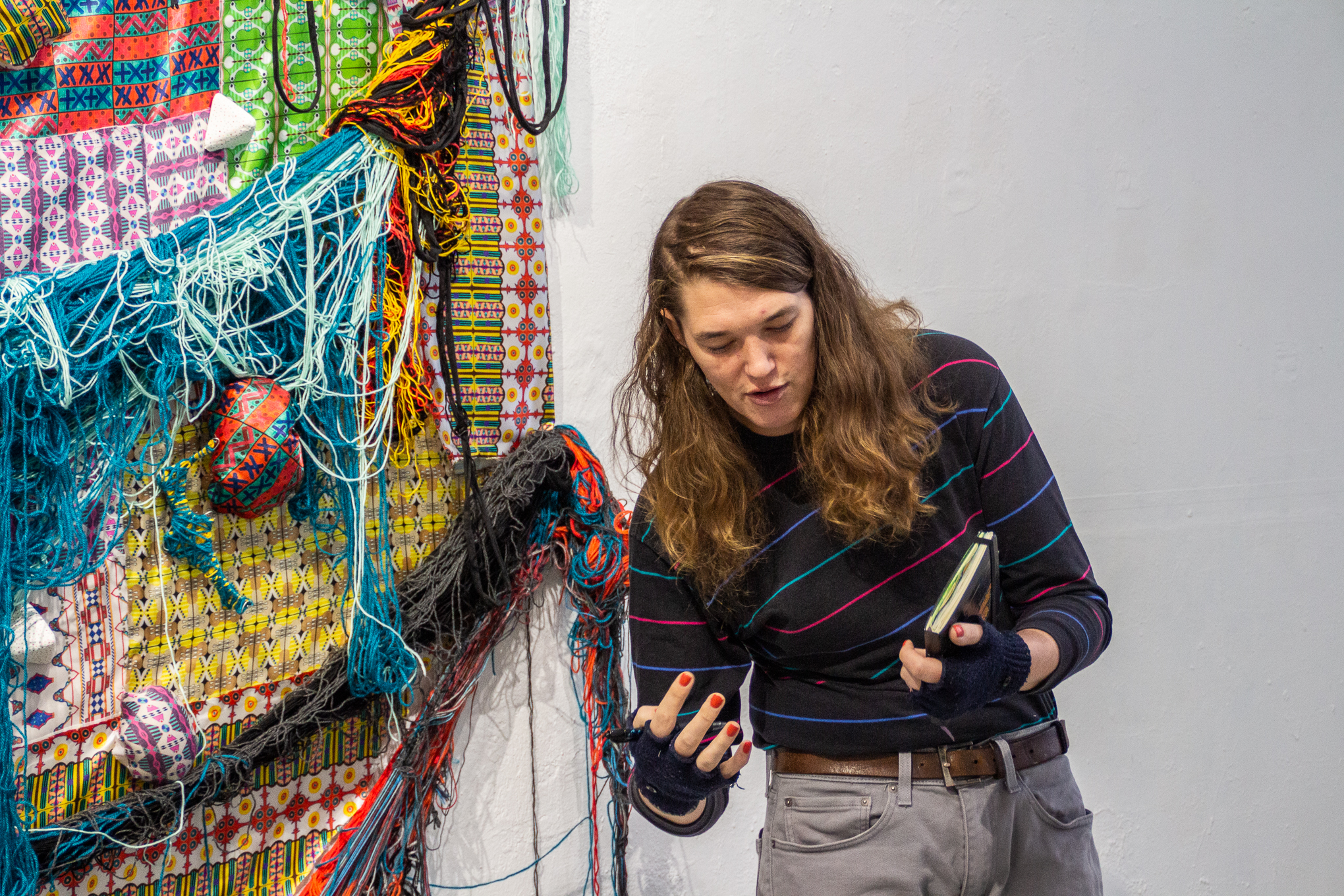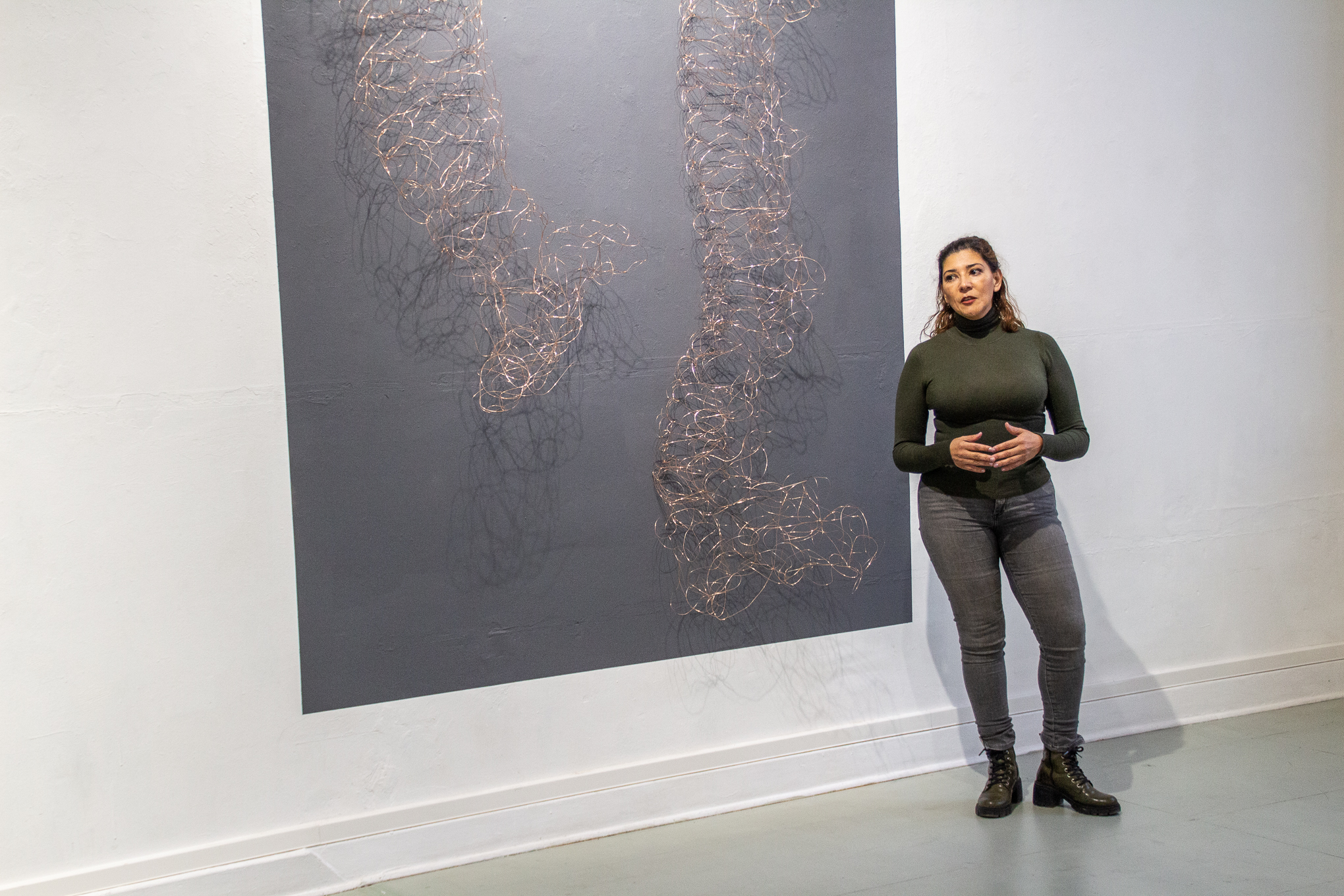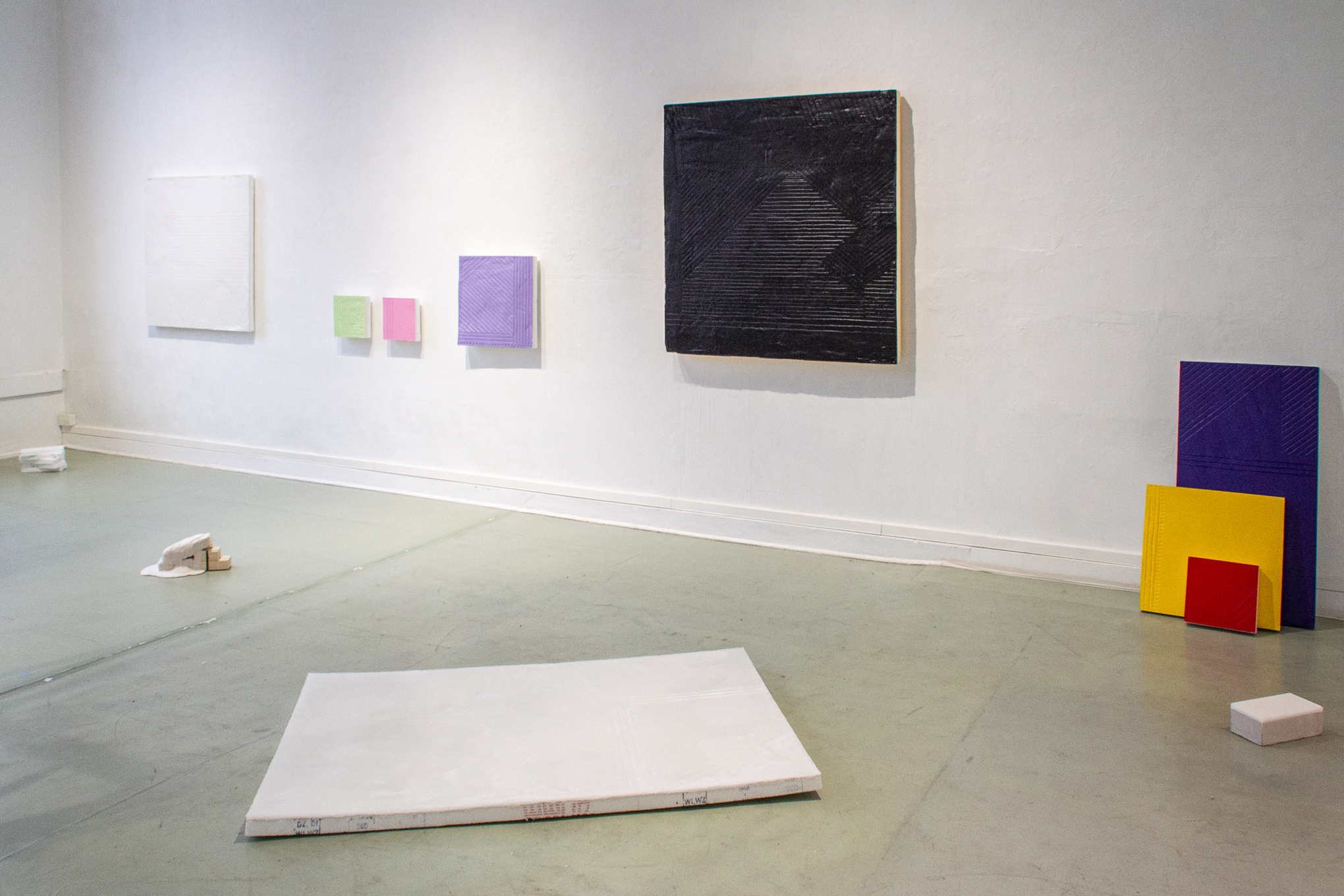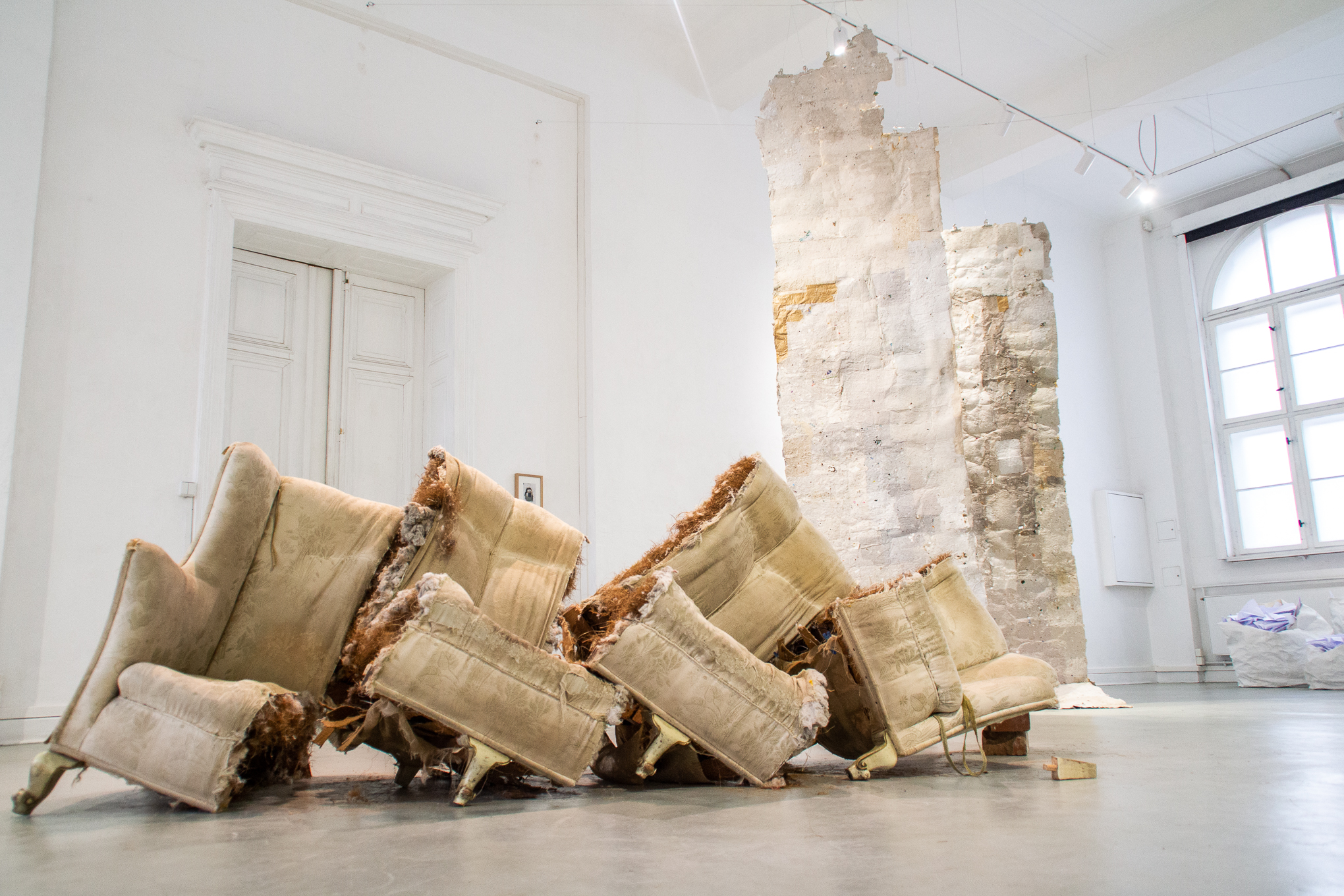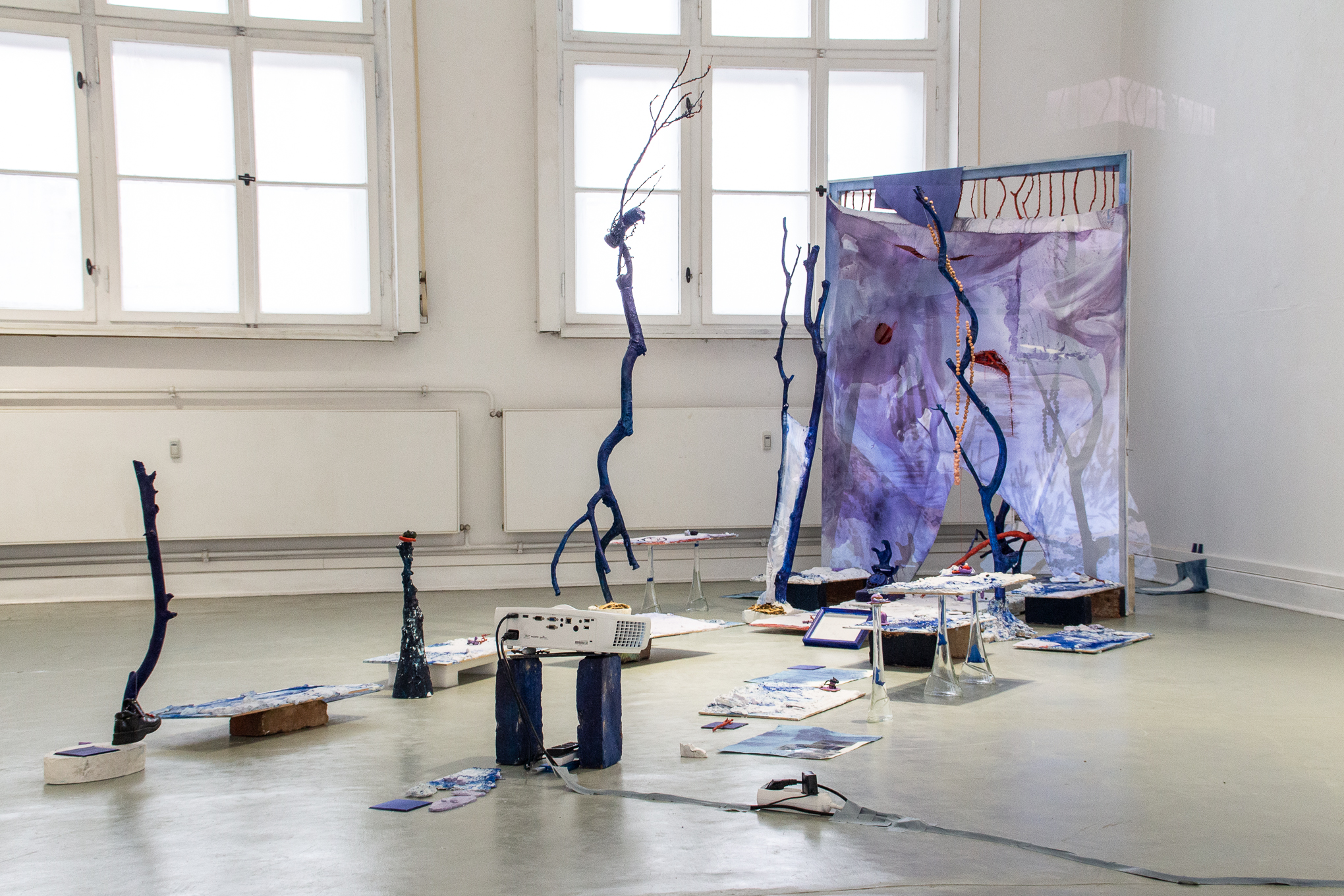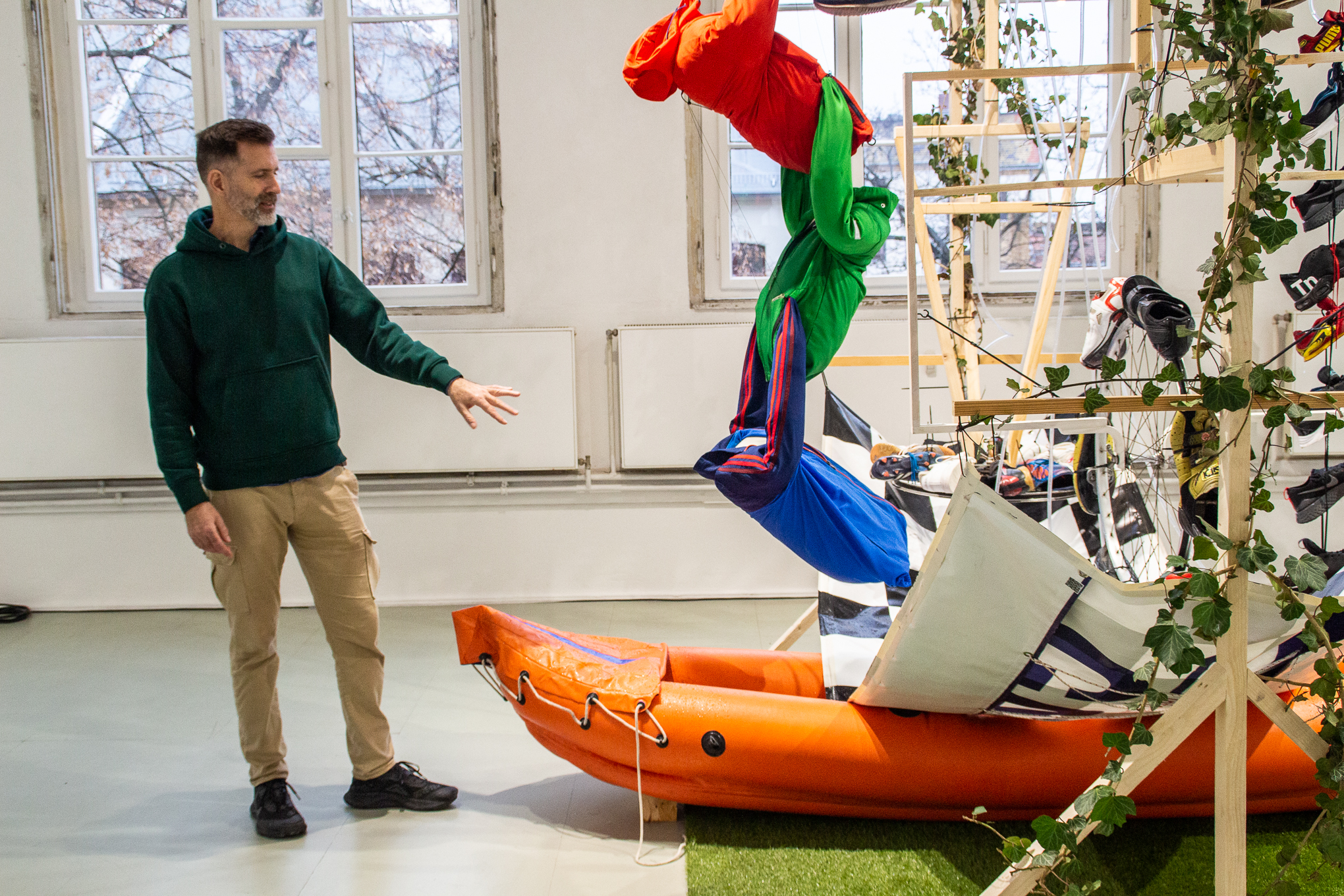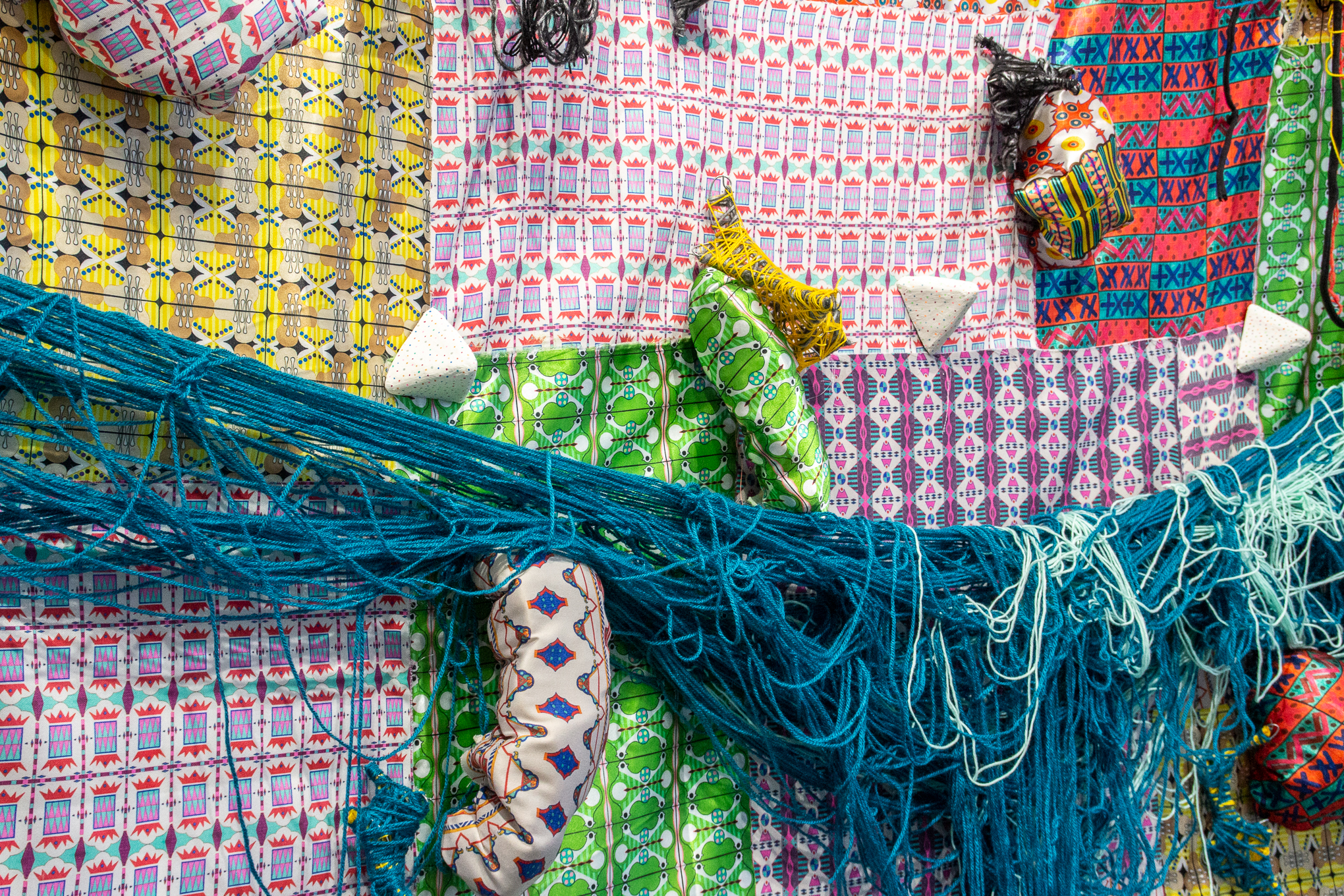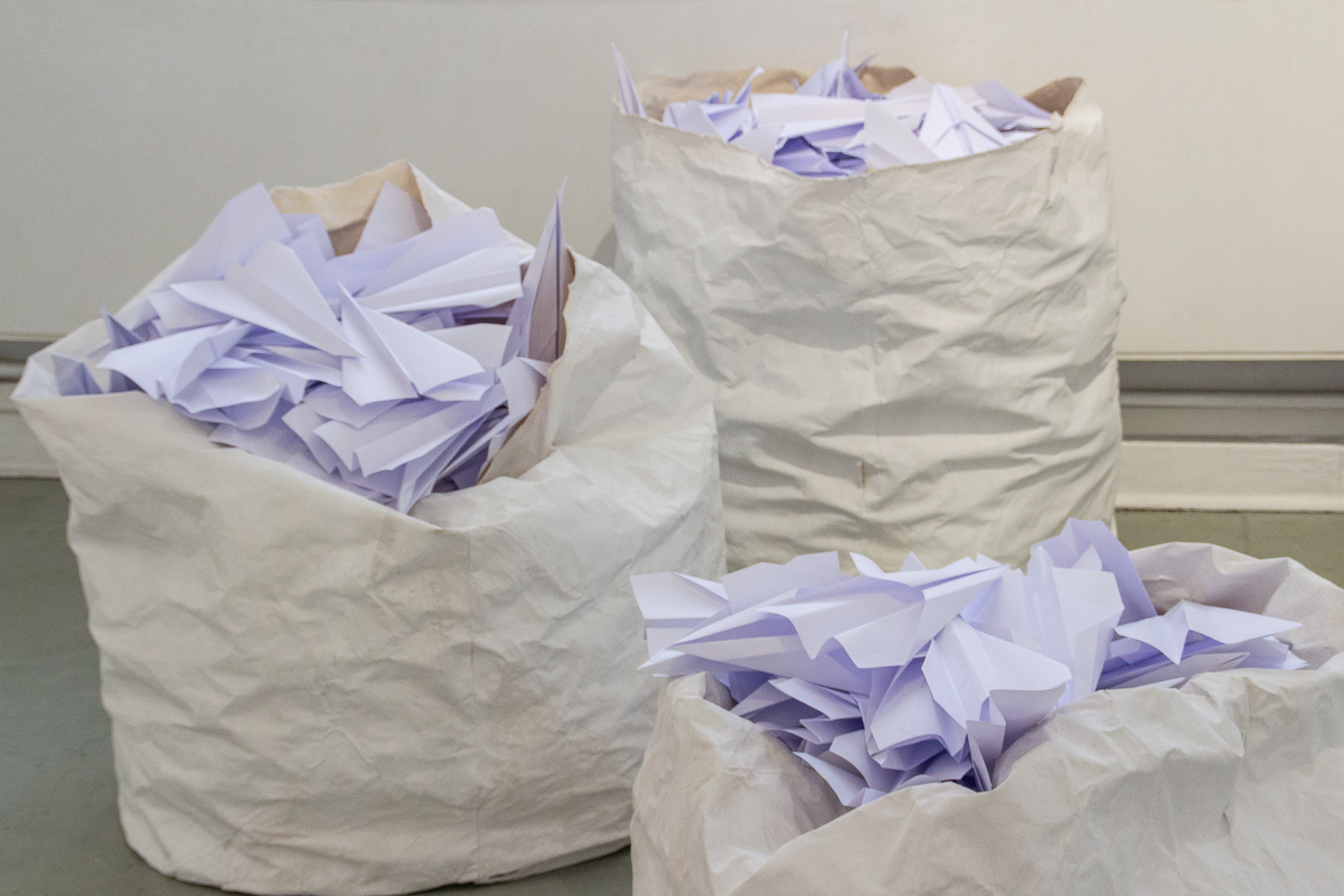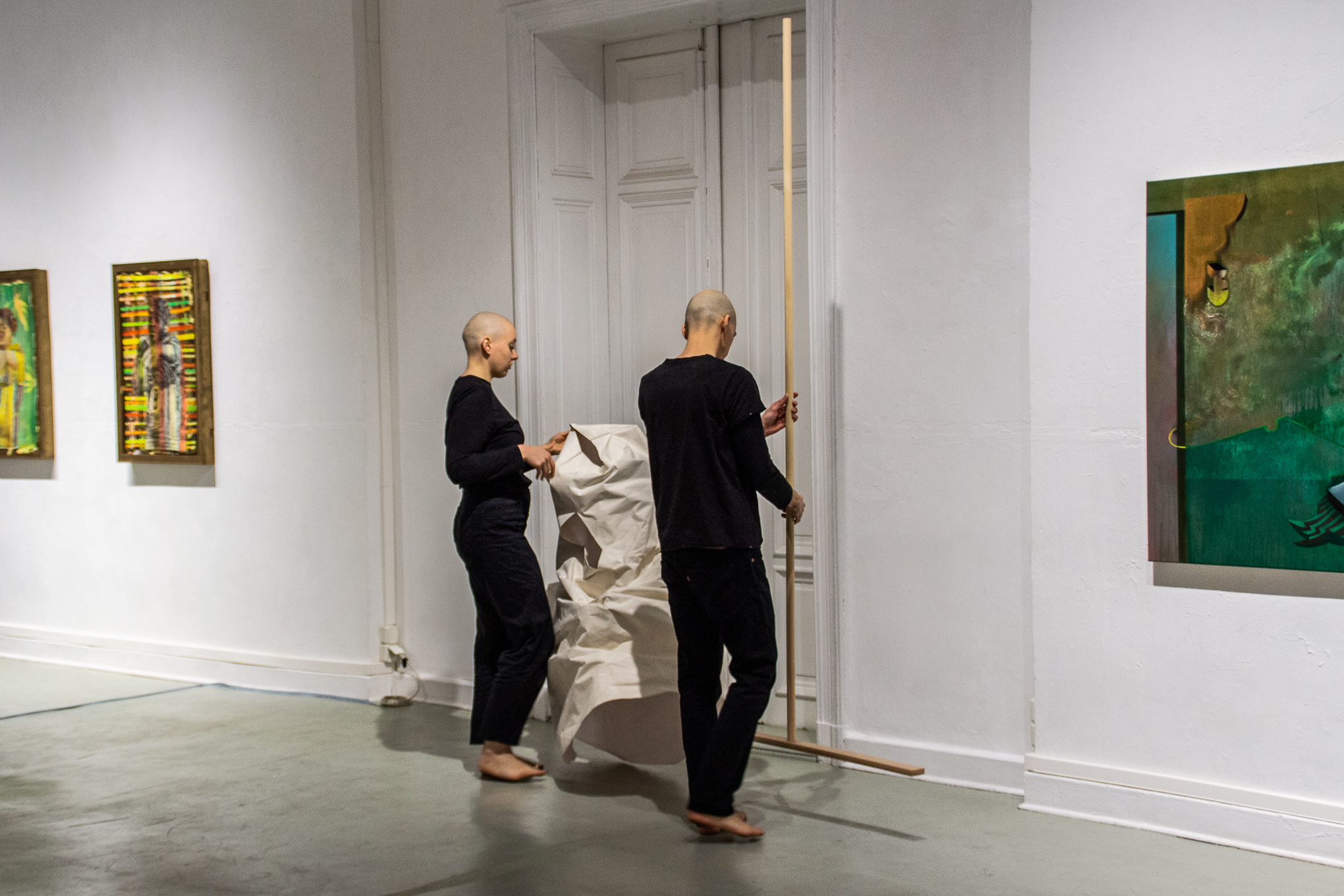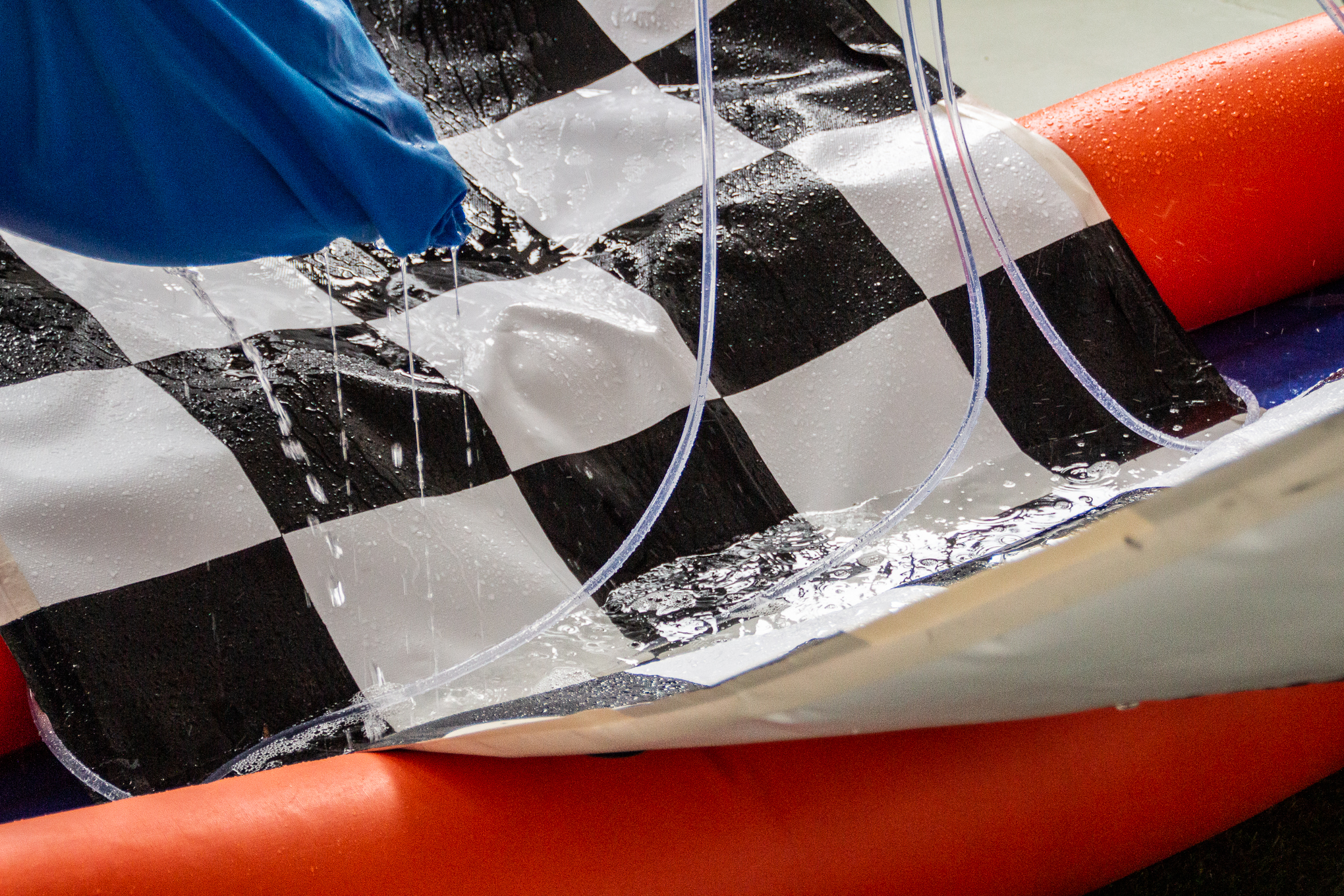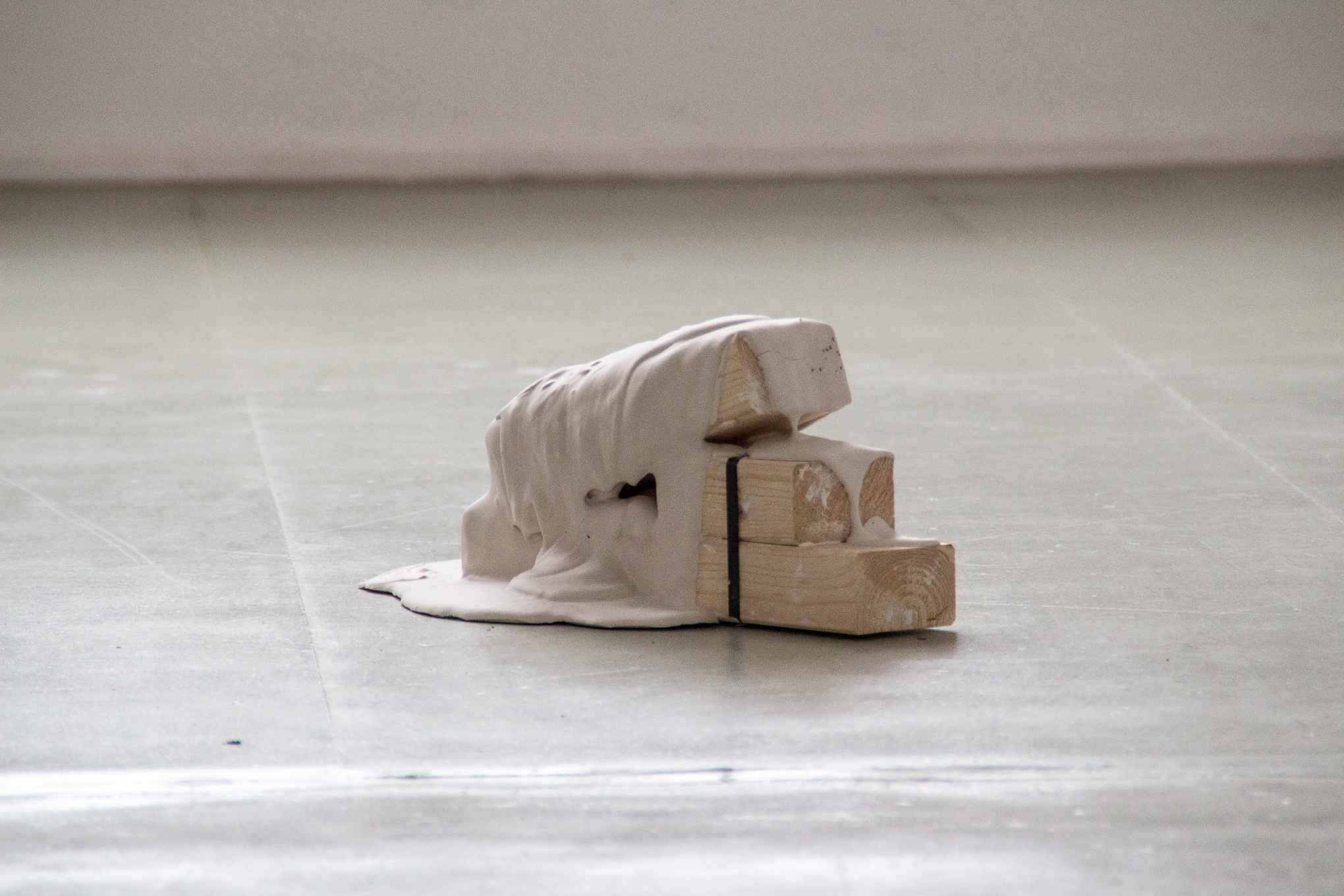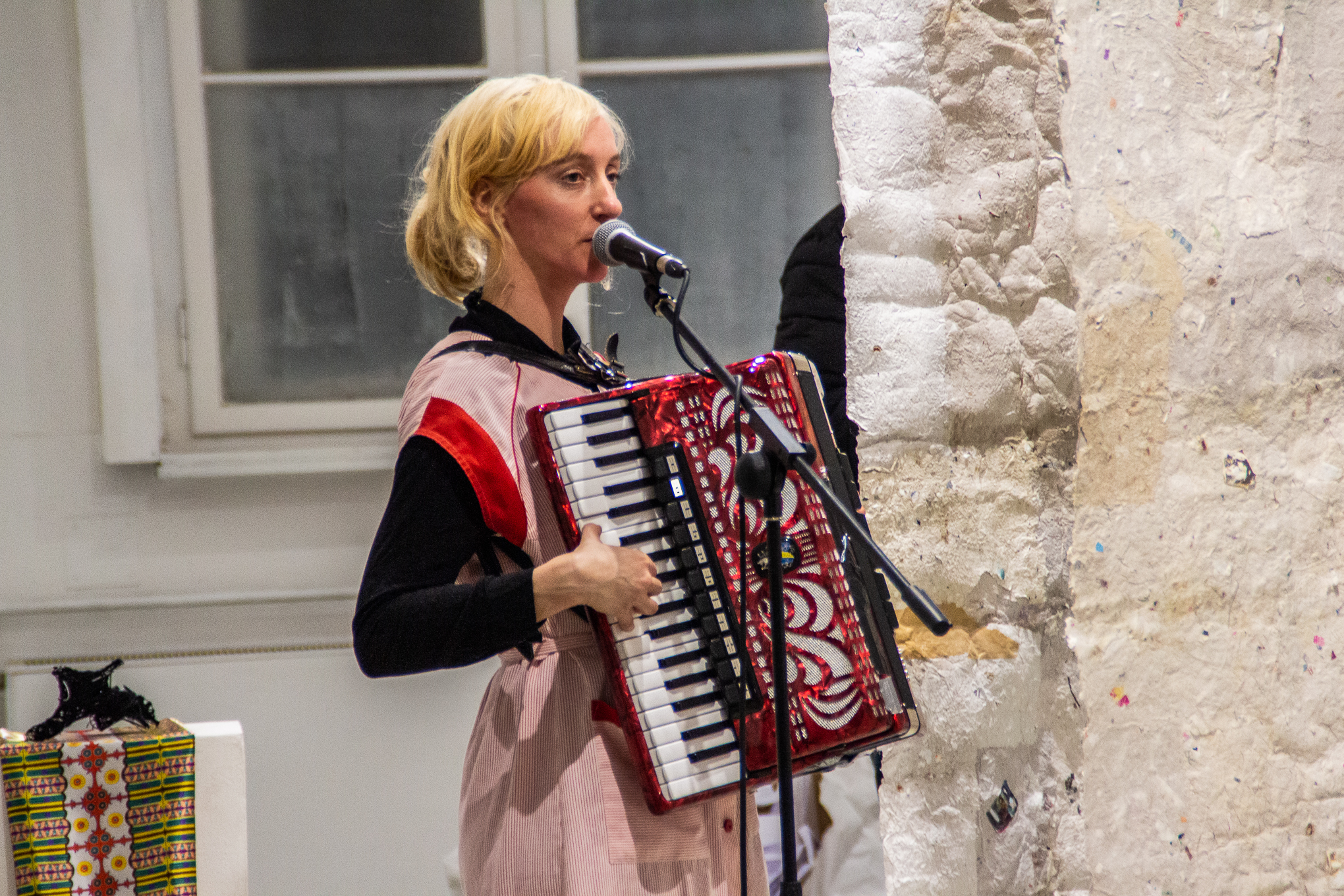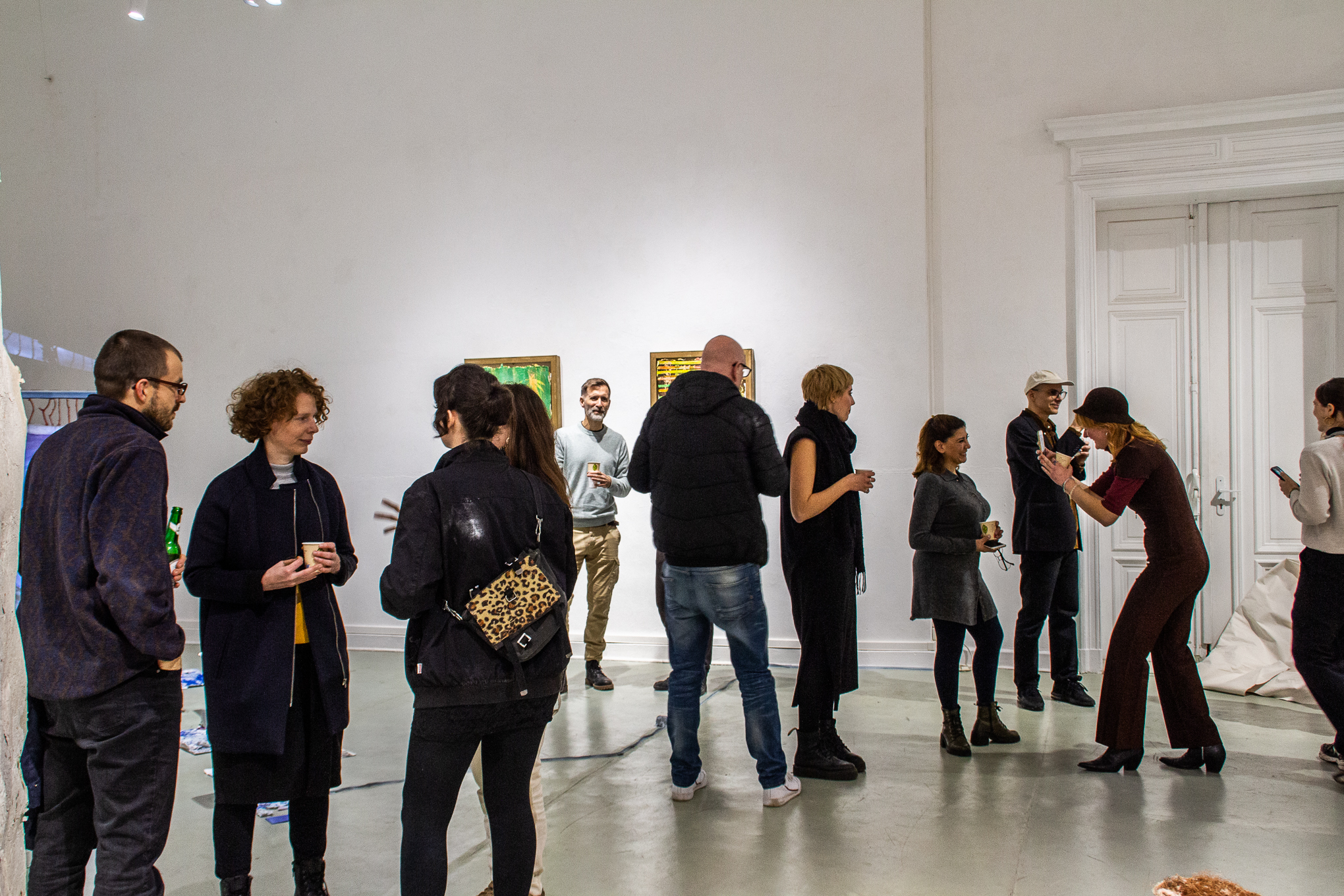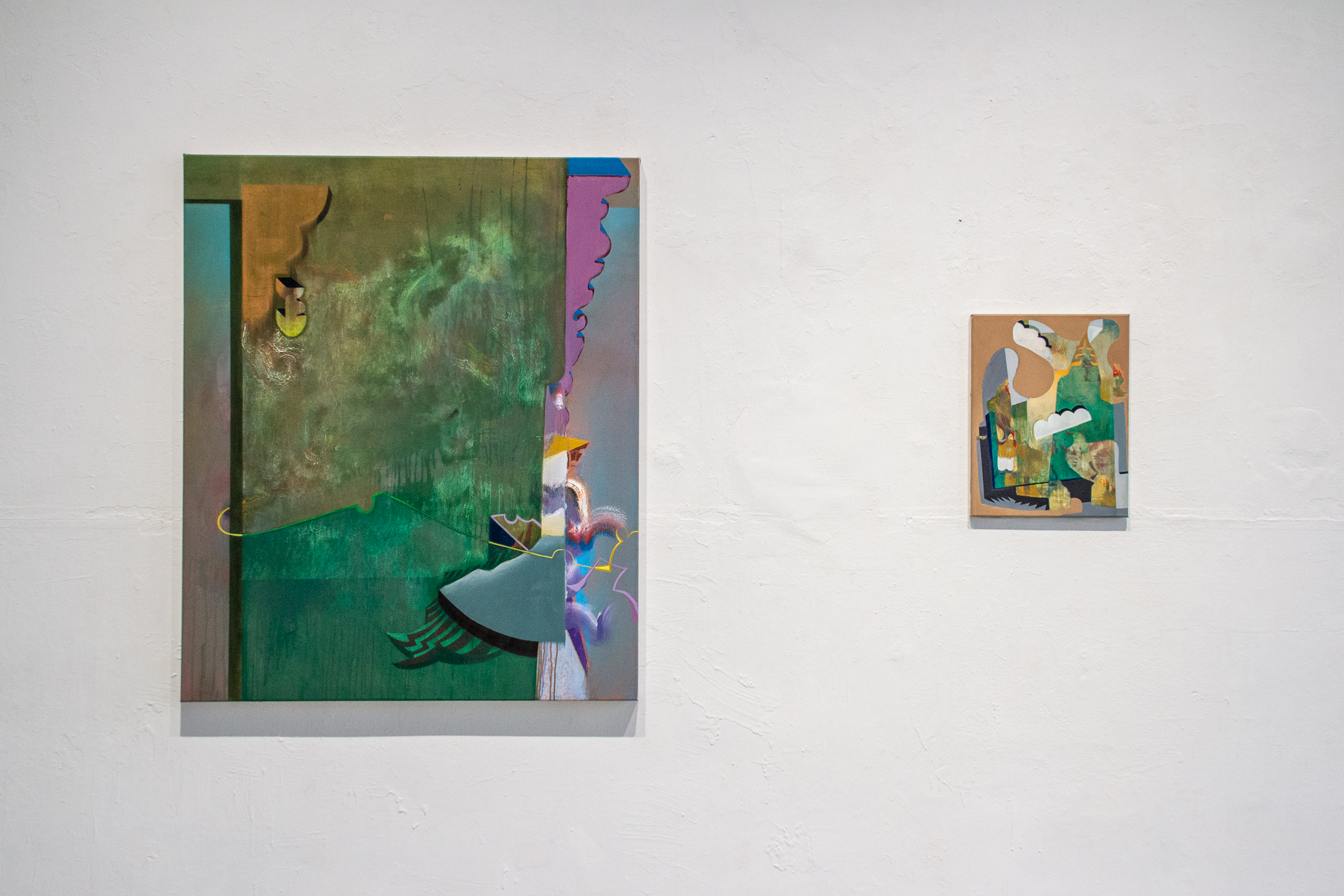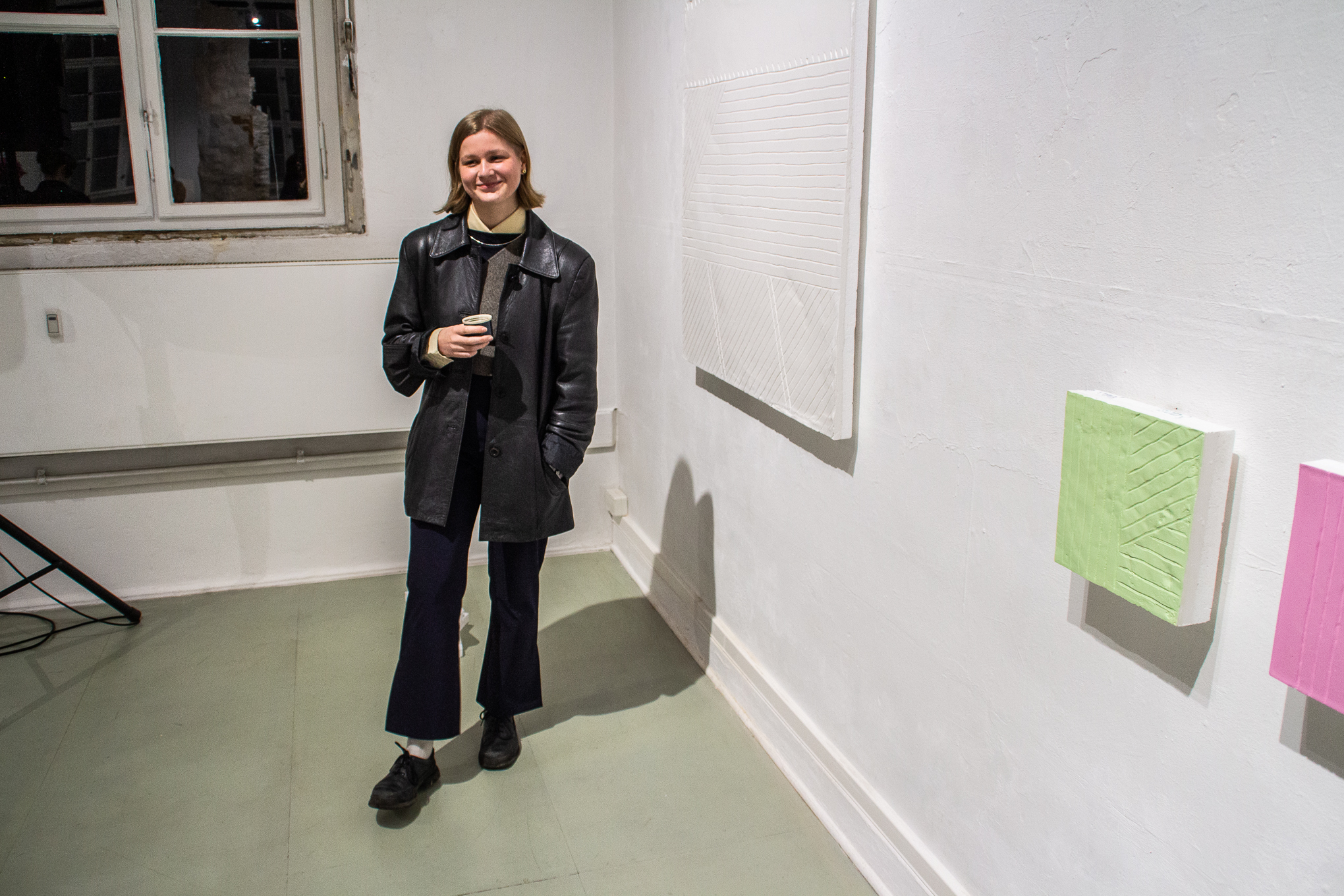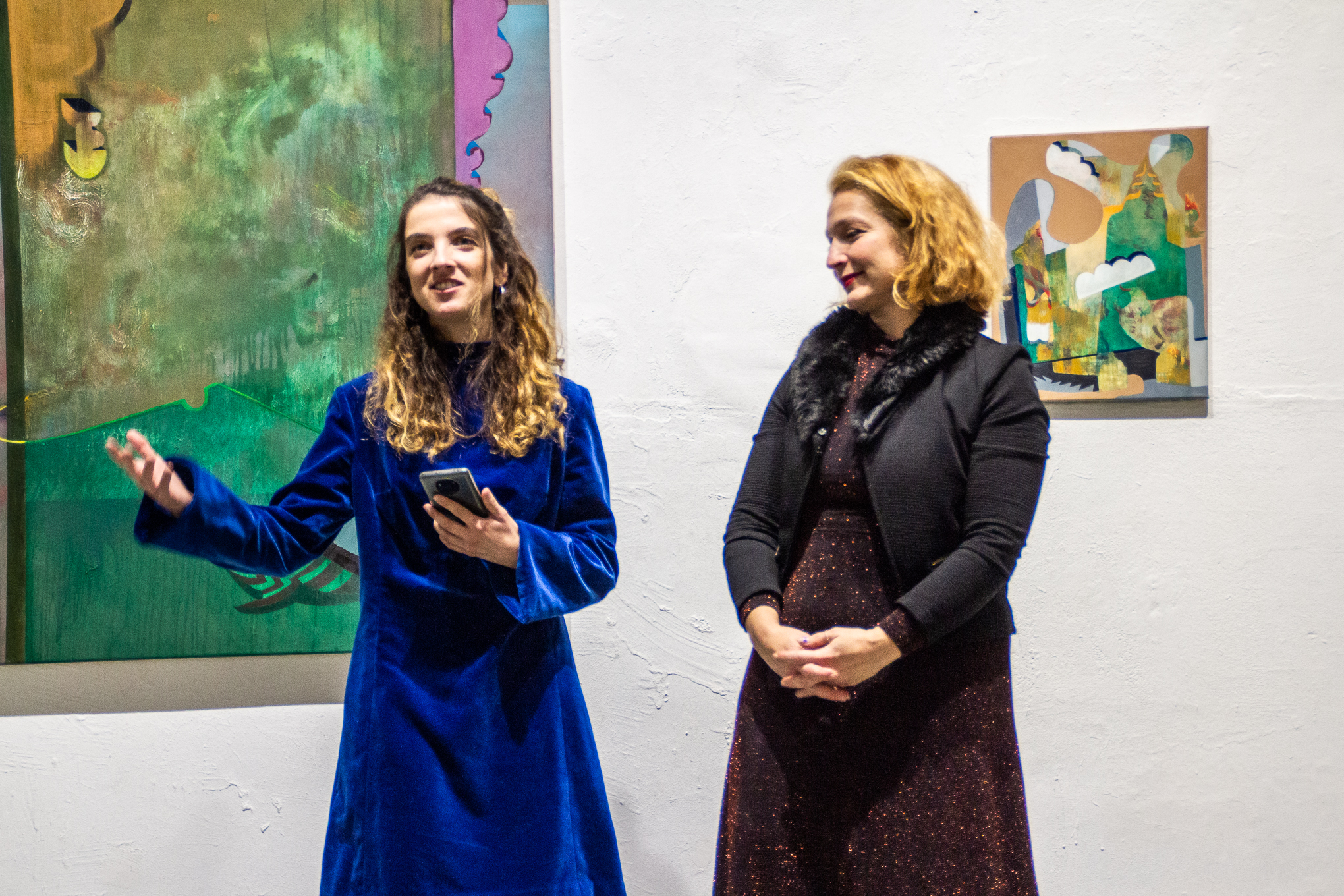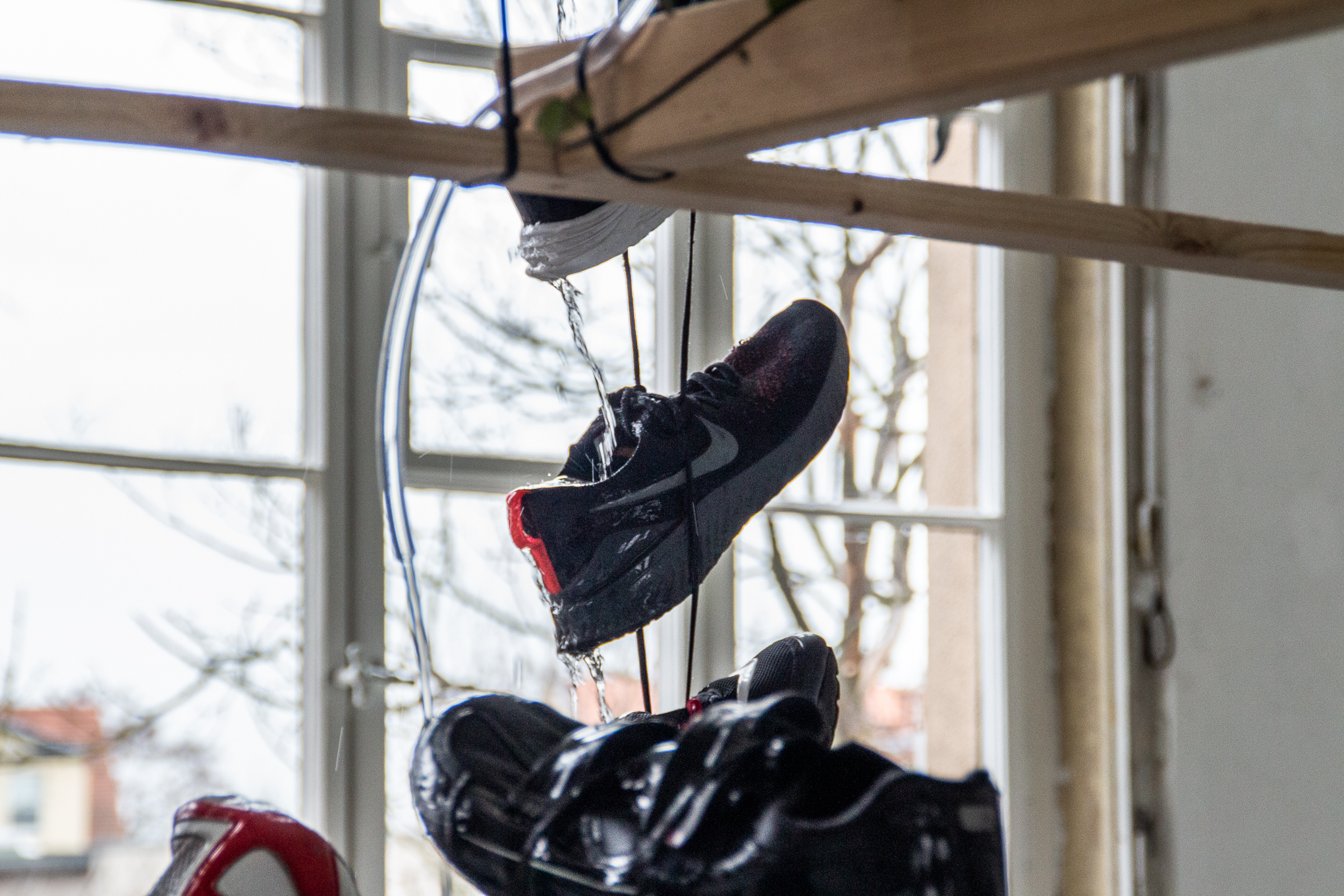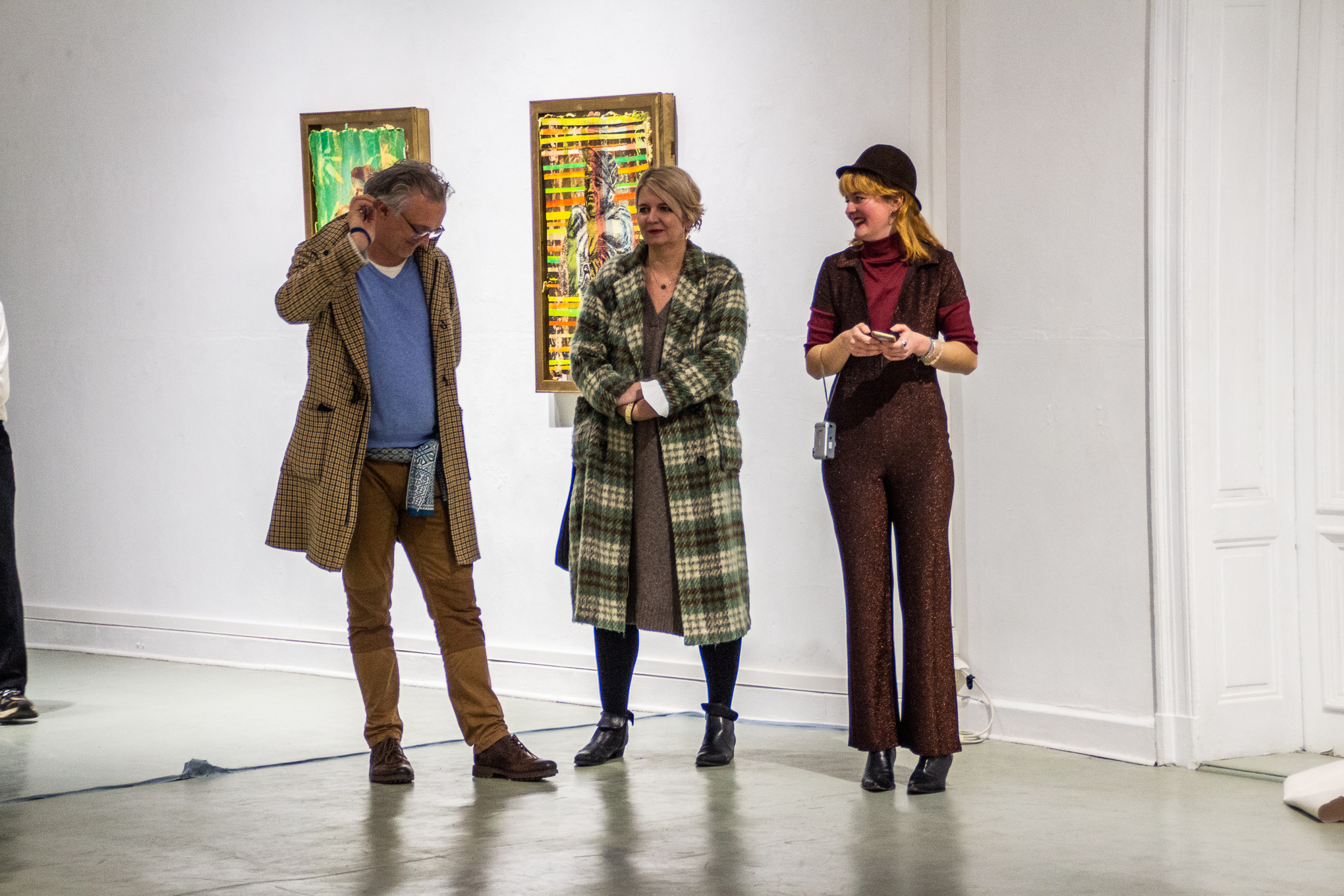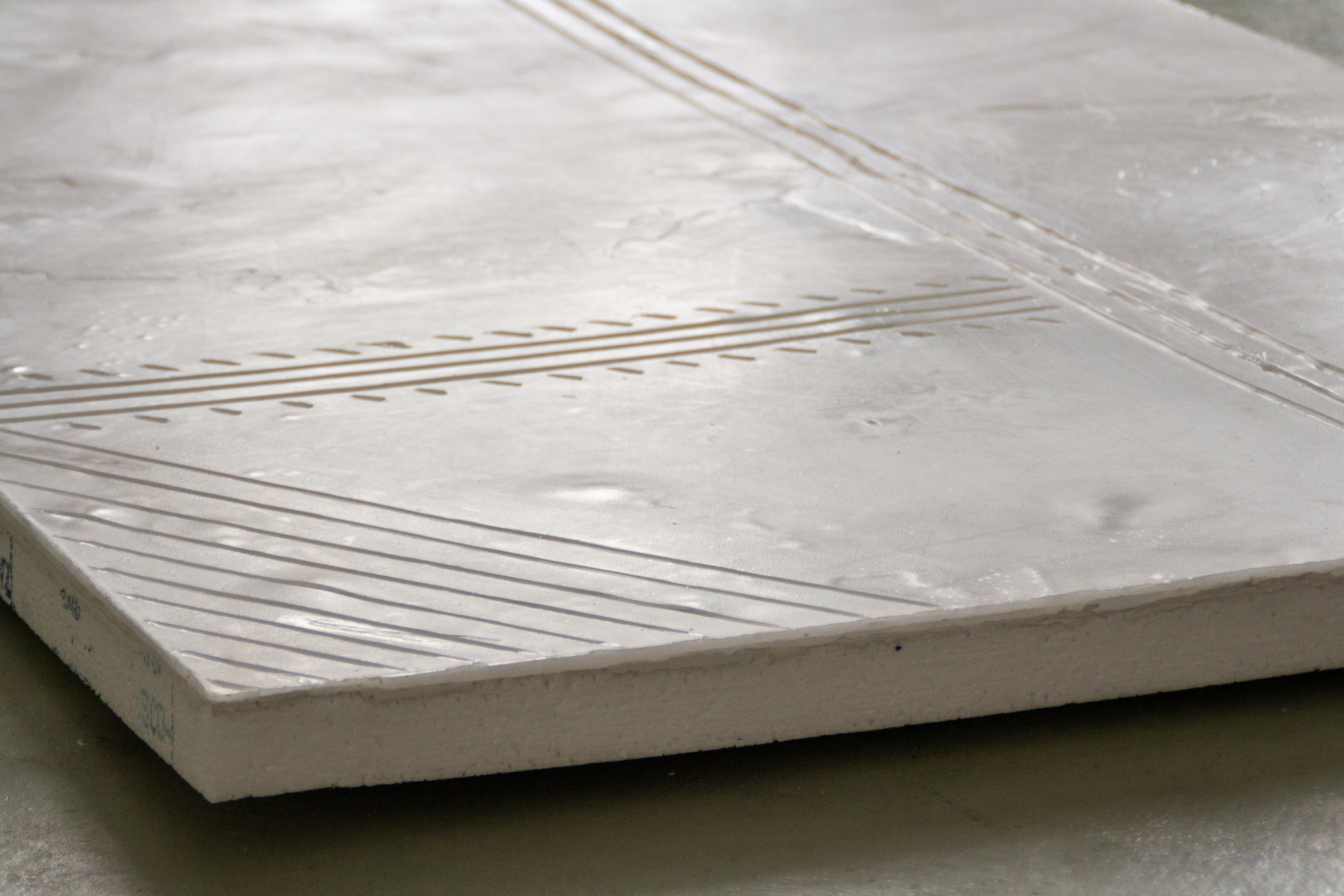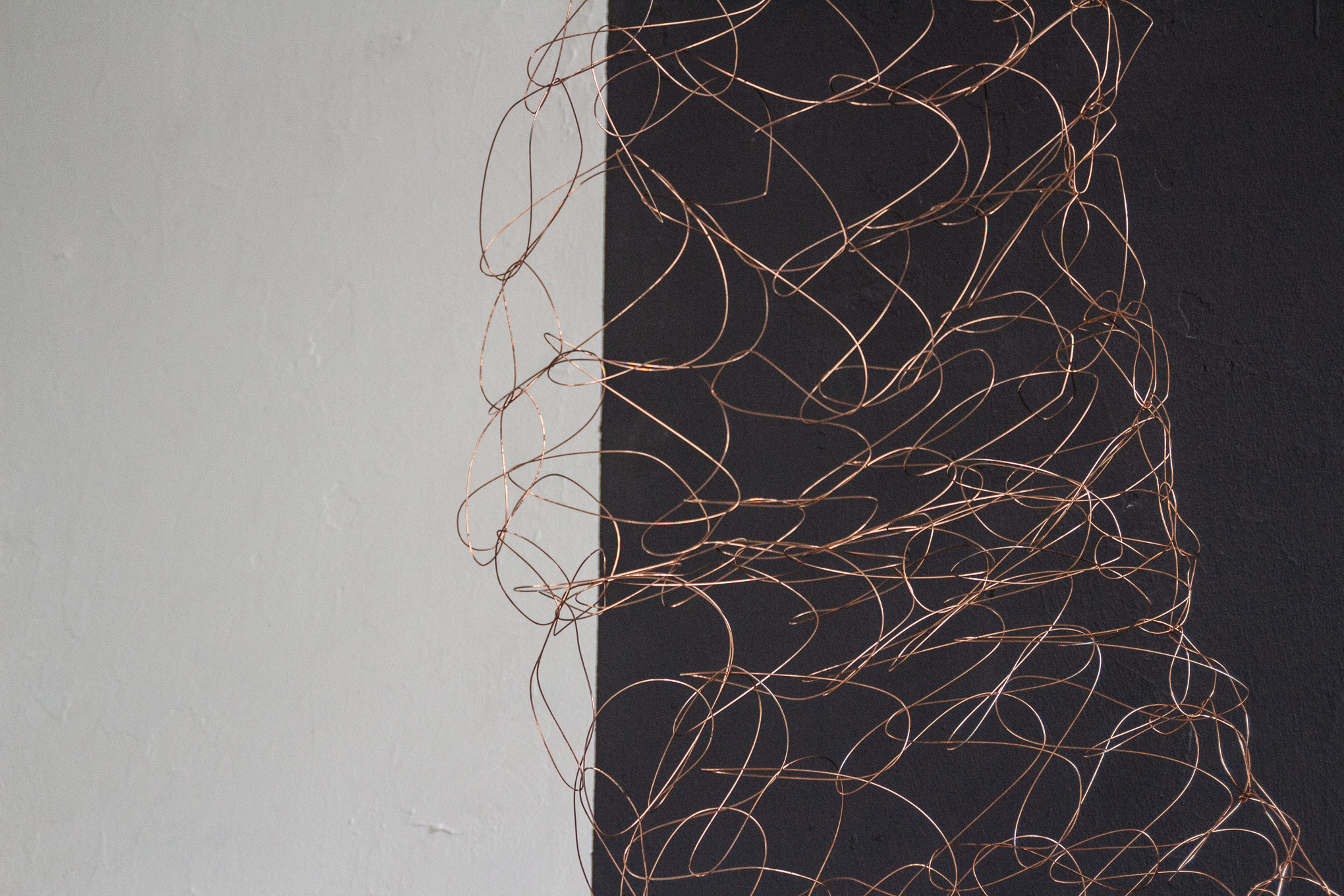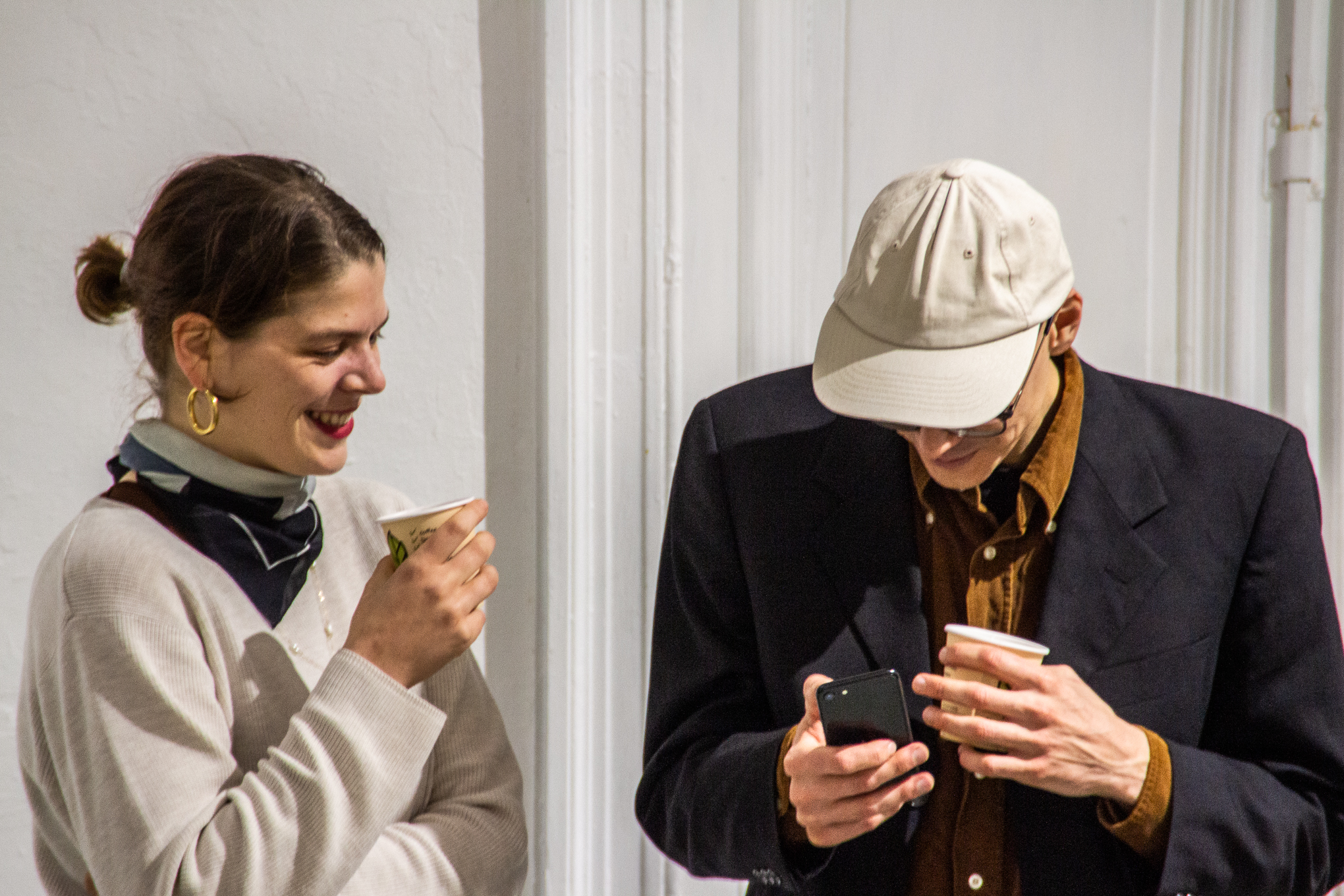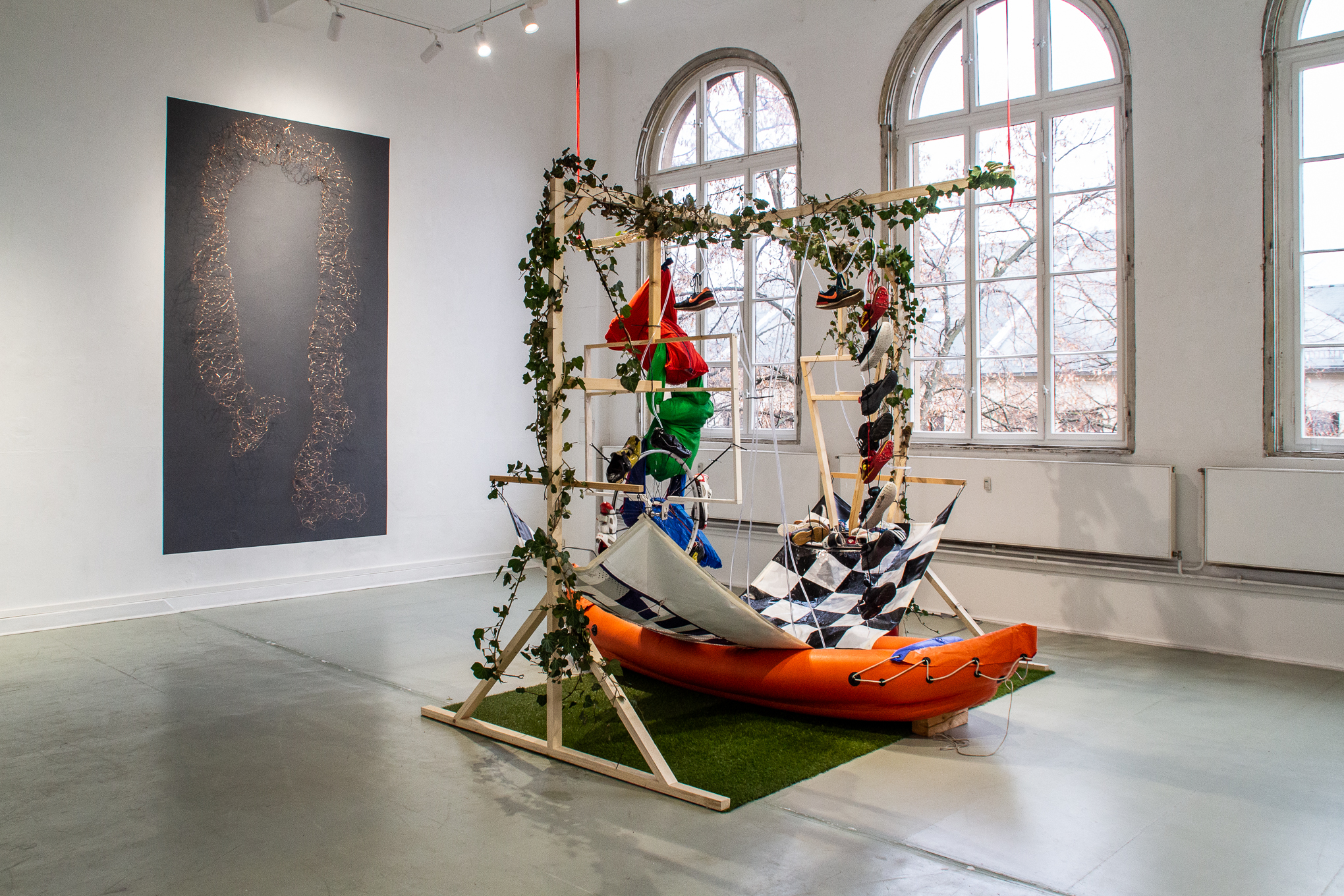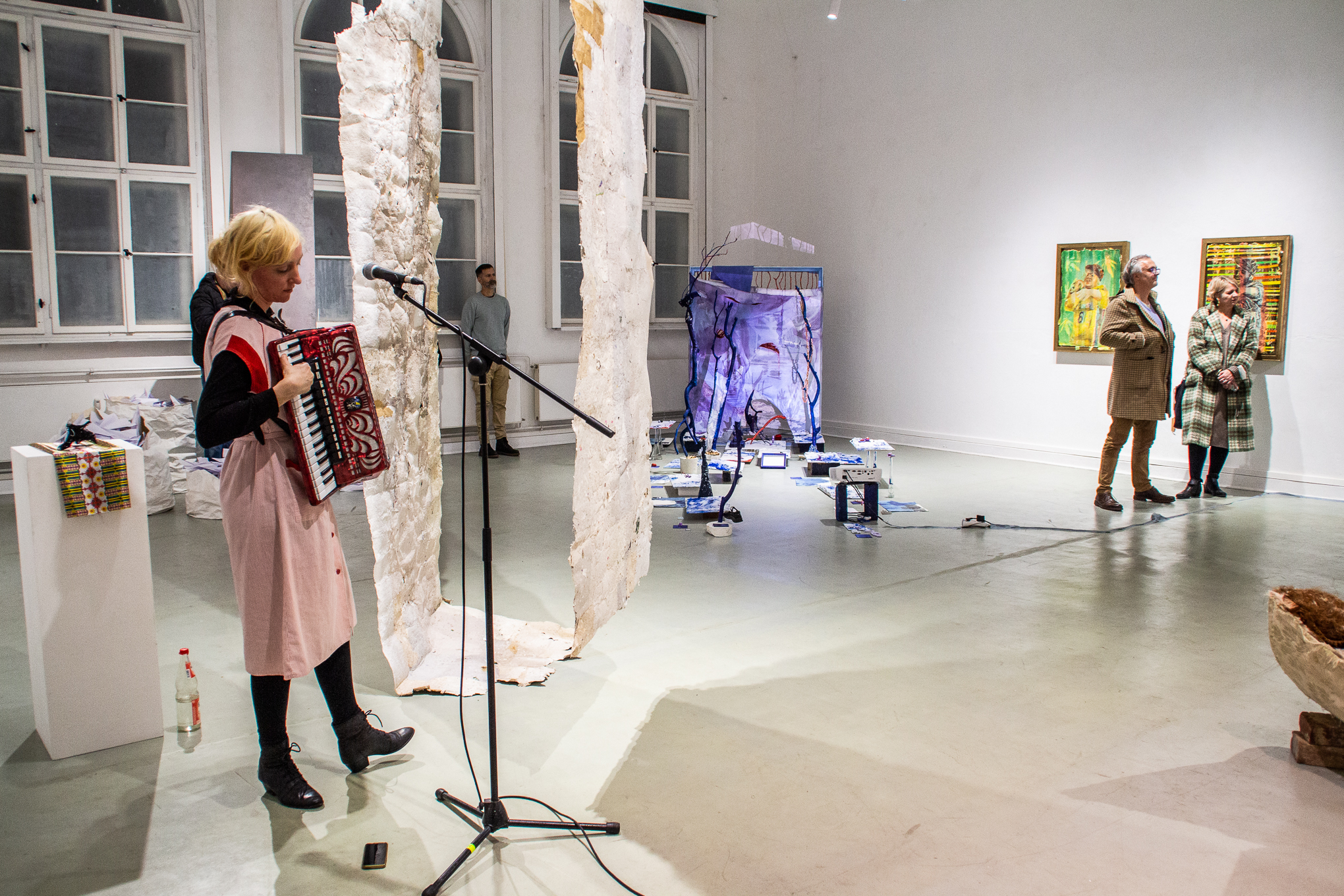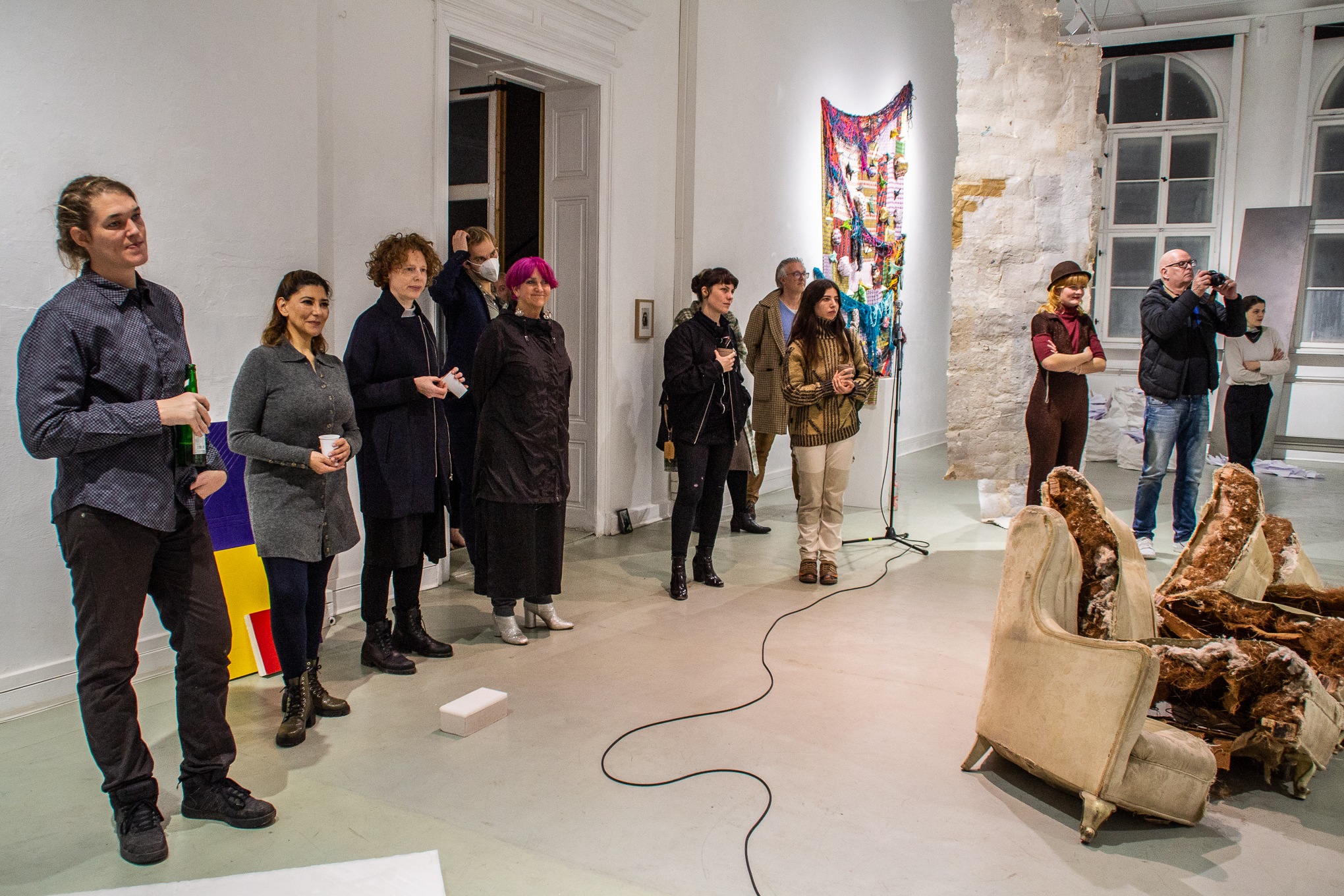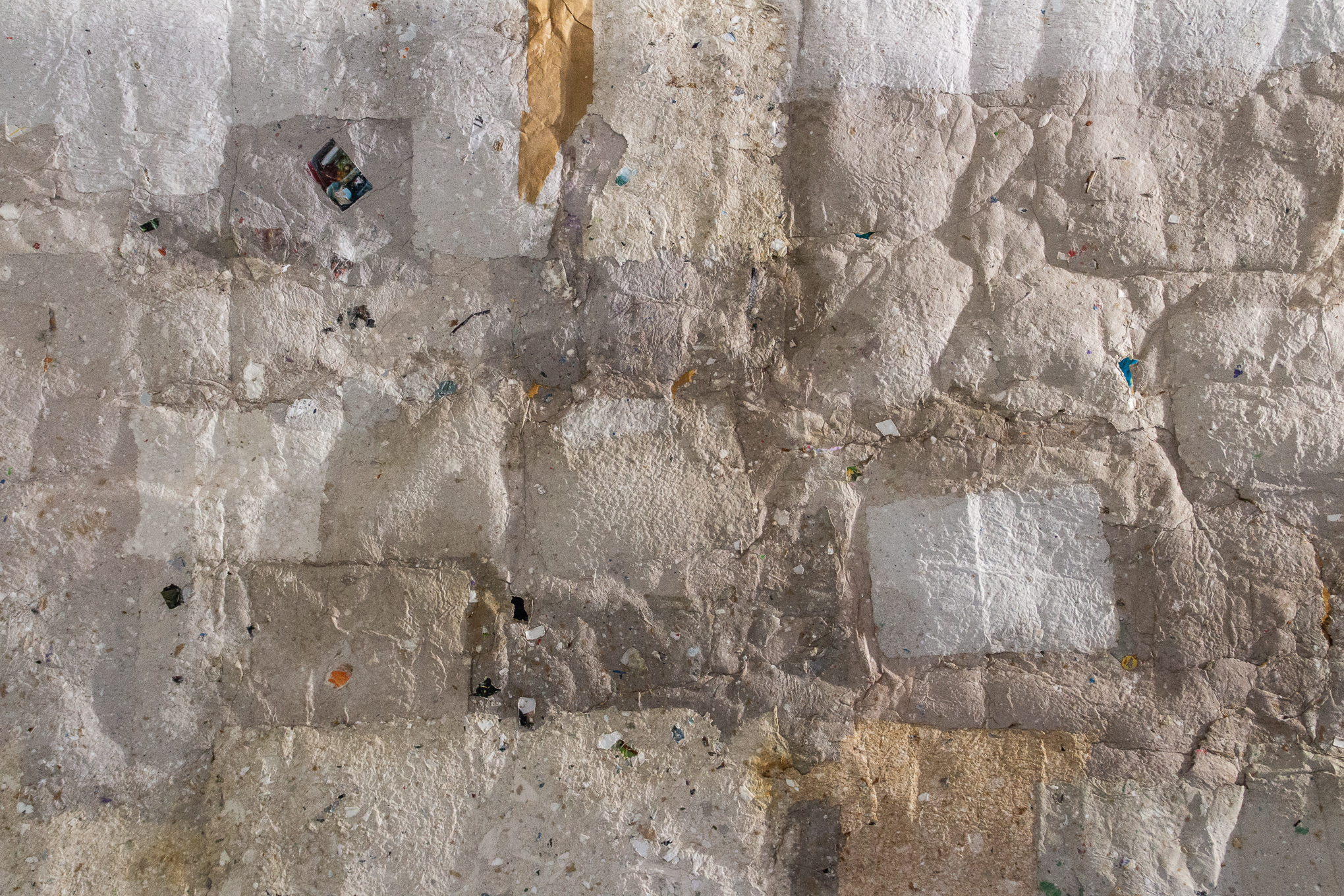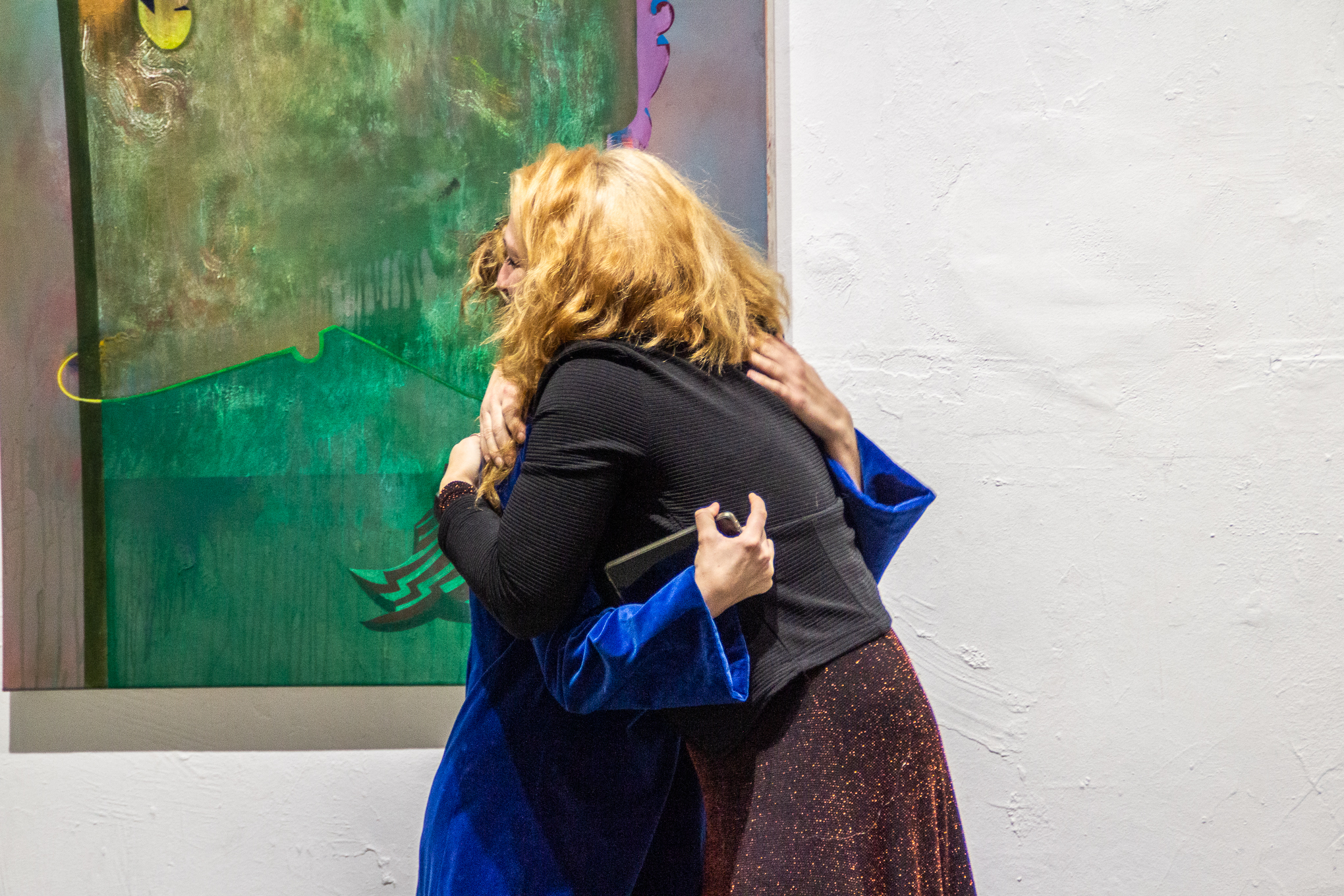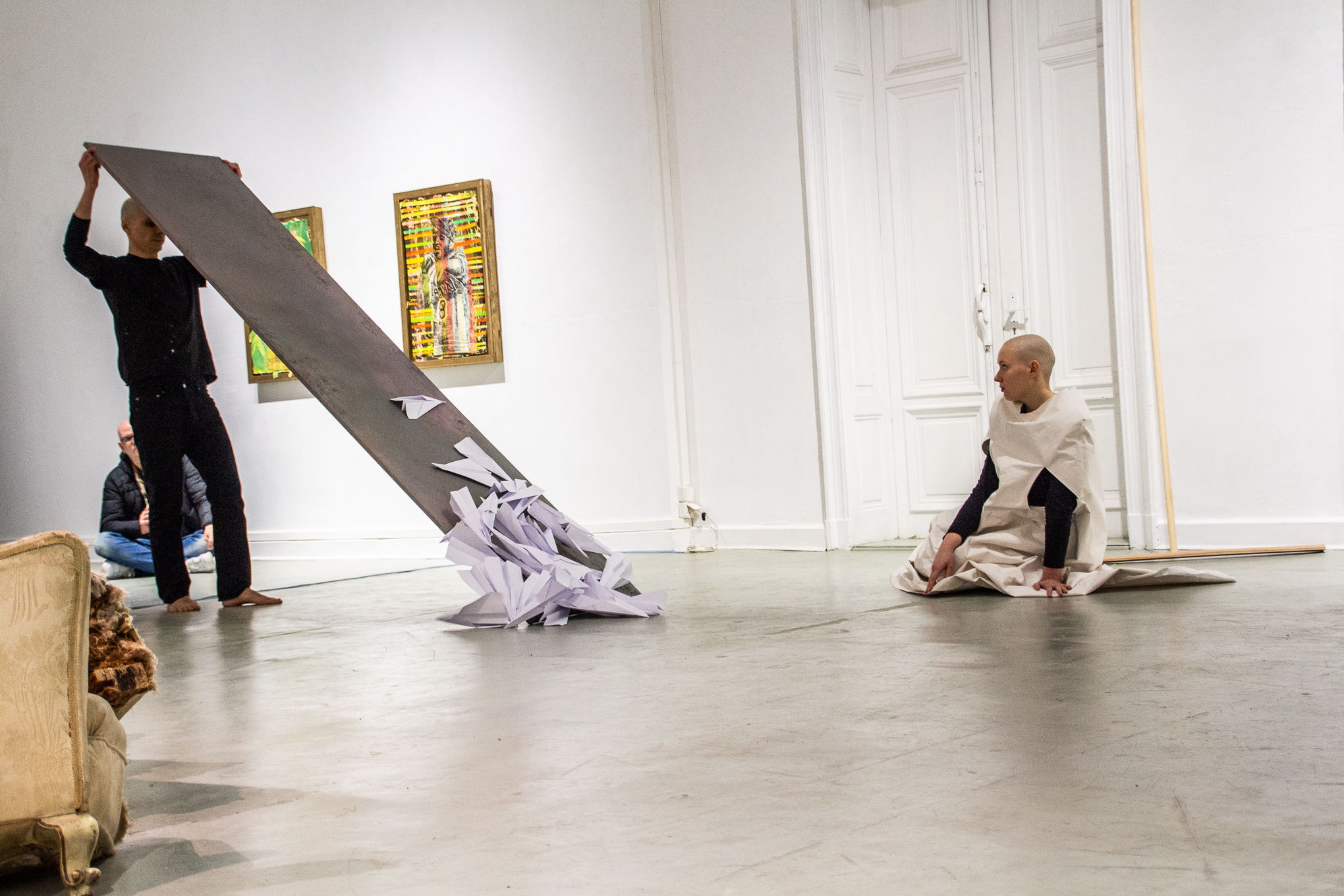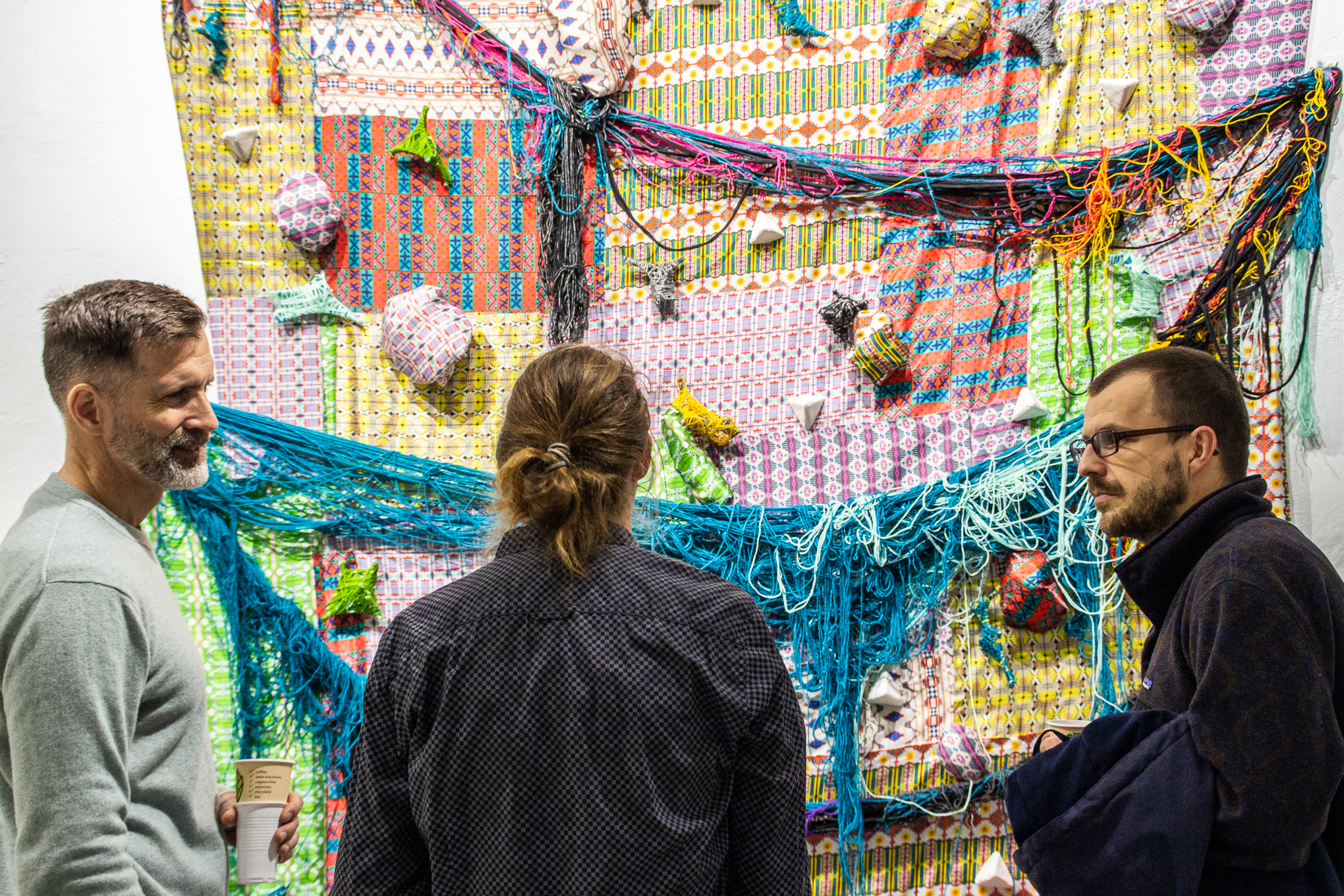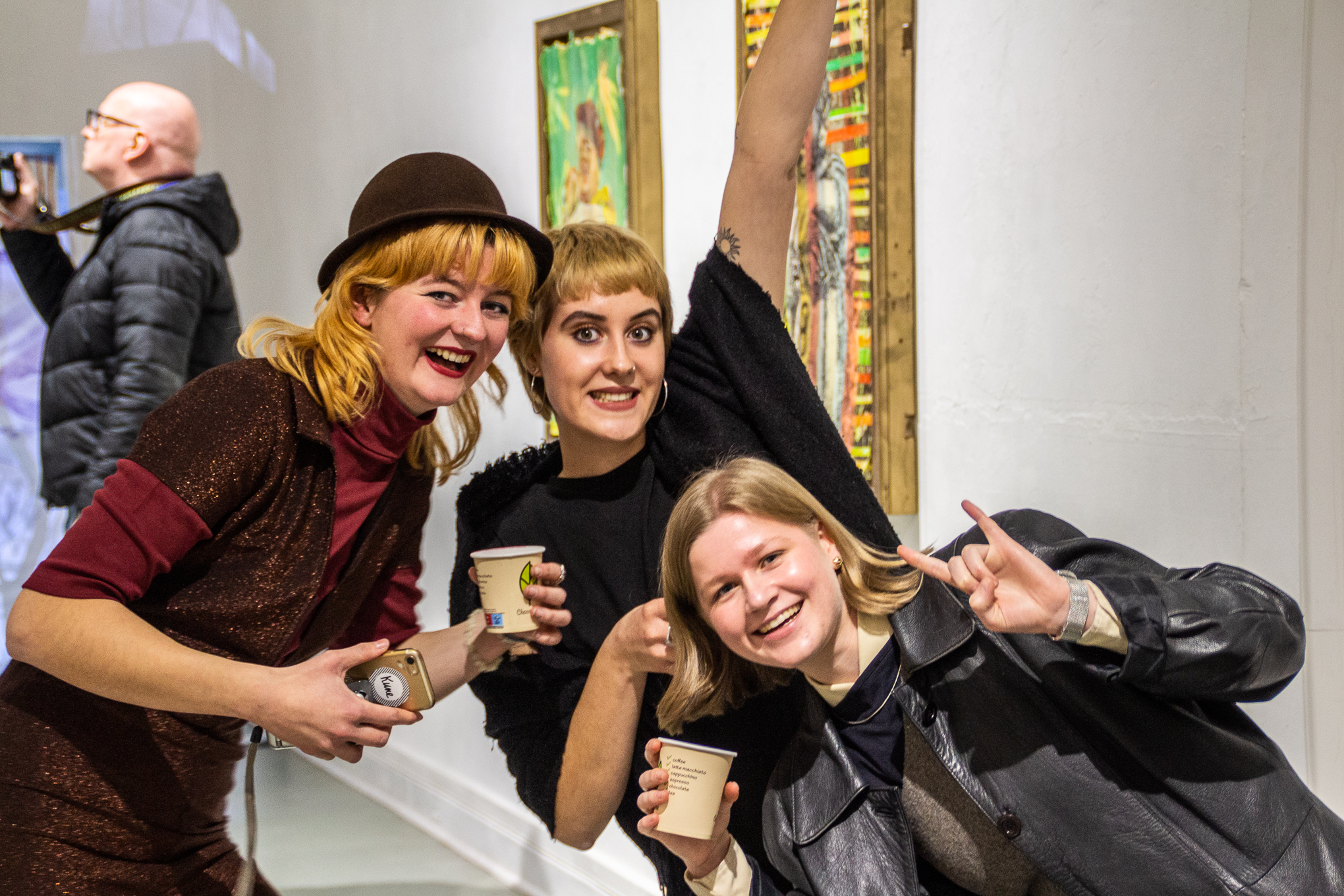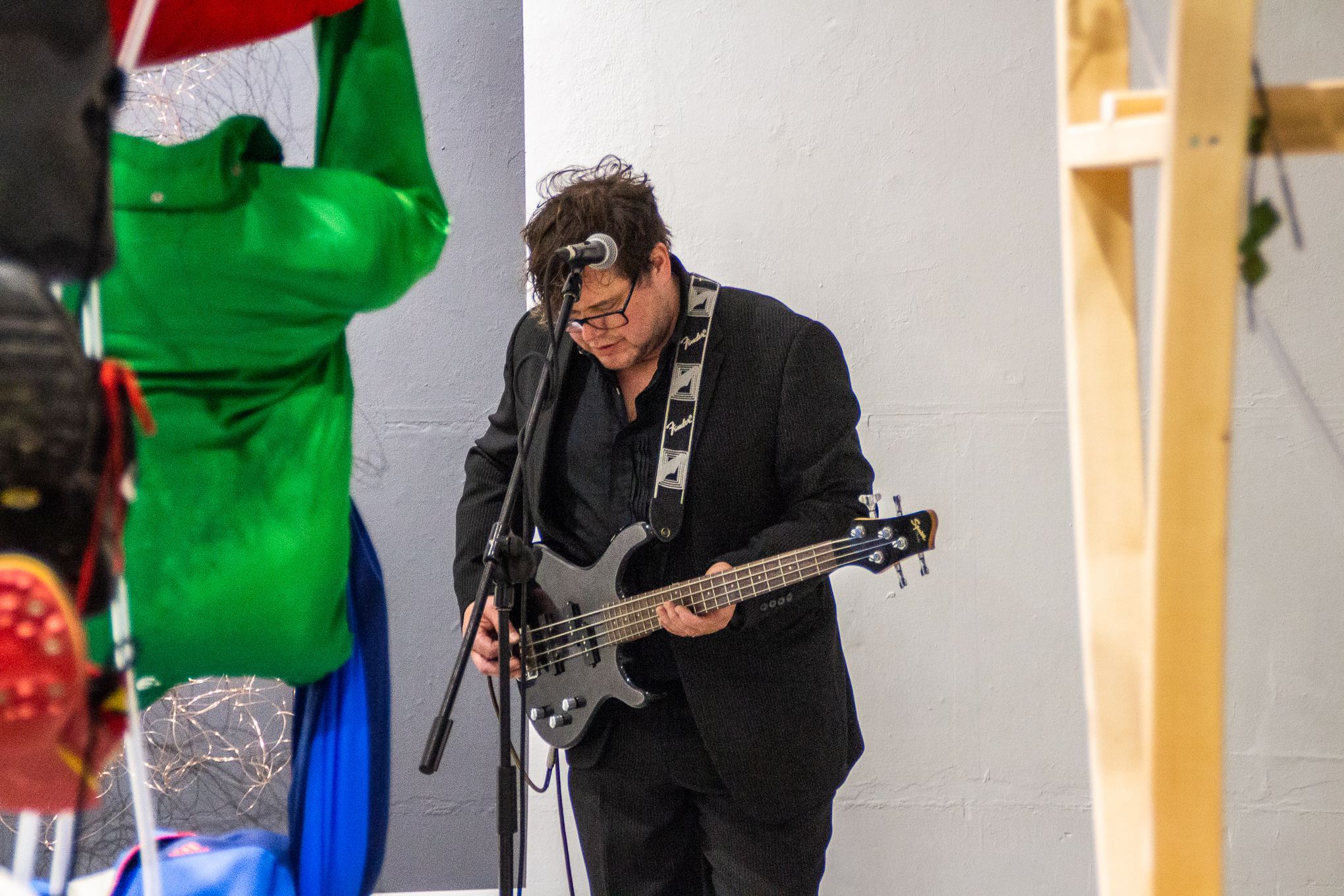In early October, the warm sun cast paintings of the window panes onto the walls of AlteHandelsschule, whilst intrigued minds wandered around the room. In December, we return, carrying cushioned wraps of artists’ works and find that the warmth of the sun has been replaced with the warmth of the collective spirit. Now, as the works lie assembled as part of Questioning Space Accumulation, this collectivity still lingers. This time, through the quietness of art works breathing together in the space.
Art as spectator
Disrupted by a lockdown, Questioning Space Accumulation inevitably enters discussions surrounding the meaning of an exhibition. Who does the exhibition serve in the absence of the spectator? Perhaps, this exhibition offers another route to approaching this discussion; urging the work itself to take on the role of the public. This opportunity is eased by the fact that many of the PK 49 artists reflect on humanness through the material form. Residues of selves, persons and nations sit within the room, contained in visual semiotics. The absence of visitors both allows each individual art work to explore a heightened introspection, whilst forming an acute awareness to other works in the room.
As time travels forward, the past becomes dislodged and attains a flexibility capable of reaching into the present. Questioning Space Accumulation plays with the malleability of memory and Carolina Valente’s curatorial decisions reinforce this. Works emerge as sites within the space, creating routes that pave out a new map. As we walk along these trails, we encounter temporal characters such as a time-wandering woman; a child haunted by aeroplanes; and a rapper from 2009. Some works gather information, capturing reflections and seeking a response, whilst others seem to release information, relaxing and spreading into the space.
photos by Fanni Papp for PK
Positioned at the door of the exhibition space, a painting by Simon Sieradzki disperses inside. The dematerialised substance consists of sacks of paper aeroplanes, a broom, a canvas outfit and a painted runway. These scatterings unite in a performance at the Vernissage, where Simon and his partner Janne Steinhardt explore dreams and hauntings through gentle motion. As their bodies interact with objects, they define a flight path over the exhibition space.
At the Vernissage, a musical experiment is performed in the space by Wir Sind Es Selbst. For the first time, the band sit apart and attempt a distanced form of improvisation. The accordion searches amongst new visual material for its partner, the bass. The two instruments create trance-like echoes that respond to the room’s offerings. The sonic reverberations remind us that the walls of the studio are no longer present, and here, both art work and people have the opportunity to reflect on the past three months.
the memory gymnasium
AlteHandelsschule becomes a repository of memory. Shahar Kramer’s paper blankets gently sway, awakened by the few breezes of wanderers in the space. Experiencing their movement, we are reminded of material retention; of an object’s capability to observe and retain. In Owen Patrick Bradley’s work, material accumulates as a forest on the wall. Memory peers out into the space, partially concealed by branches of entangled yarn that contain remnants of action. As we approach the work of Anna Cambier, we enter thoughts drenched in blue hues. Memory is made modular and temporal moments find themselves nurtured through the unconscious empathy of strangers. Michael Eppler’s foamy paintings bubble in chromatic vision. Memory and imagination fizz up, unveiling a rap album cover lost in time.
images by PILOTENKUECHE
As we reach the far side of the room, memory harnesses onto tradition; inviting acts of repetition, intangible and formal, to take on significance. Though the repetitive act of knitting, Claudia Lugo invites an act of care to become a physical armour in the space. Neighbouring this work, Christina Baumann’s paintings fabricate impossible landscapes. Dislocated layers of shape create space that cannot be entered. Alexis Gros-Louis’ plaster forms may engage with ideas surrounding repetition as a form of re-investigation. As traditional Wendat pottery patterns enter into the gallery setting, they may discover alternate futures. As we meet the waterlogged installation of Manuel Poitras, we begin to see how acts of regeneration may also create loss, as he reflects on the global climate emergency. Streams of water begin to soak an assortment of sport objects and motivations to train cross dangerous paths with stories of the great flood.
the way forward
Questioning Space Accumulation presents discussions surrounding the use of memory and tradition as a device to engage with futures. In these times of instability, Questioning Space Accumulation offers us a pair of binoculars through which we can view evidences of regeneration arising from moments of vulnerability, object-thinking and the before.
written by Kizzie McNeal
Have a look at Questioning Space Accumulation’s online catalogue for details about the artists, their work and their words.
Questioning Space Accumulation
2G viewing by appointment only
Sunday 19 Dec and Monday 20 Dec
12 noon – 4PM
max 4 people per booking
Alte Handelsschule
Giesserstr 75
04229 Leipzig
International residents
Manuel Poitras (CA)
Simon Sieradzki (AU)
Claudia Lugo (MX)
Shahar Kramer (IL)
Owen Patrick Bradley (US)
Anna Helga Marie Cornelie Cambier (DE)
Alexis Gros-Louis (CA)
Local participants
Christina Baumann
Michael Eppler (DE)
Curator
Carolina Valente (PT)
Interns
Fanni Papp (HU)
Iqra Ghaffar (IT,PK)
Johanna Morgen (DE)
Kizzie McNeal (UK)
Digital catalog
Fanni Papp

